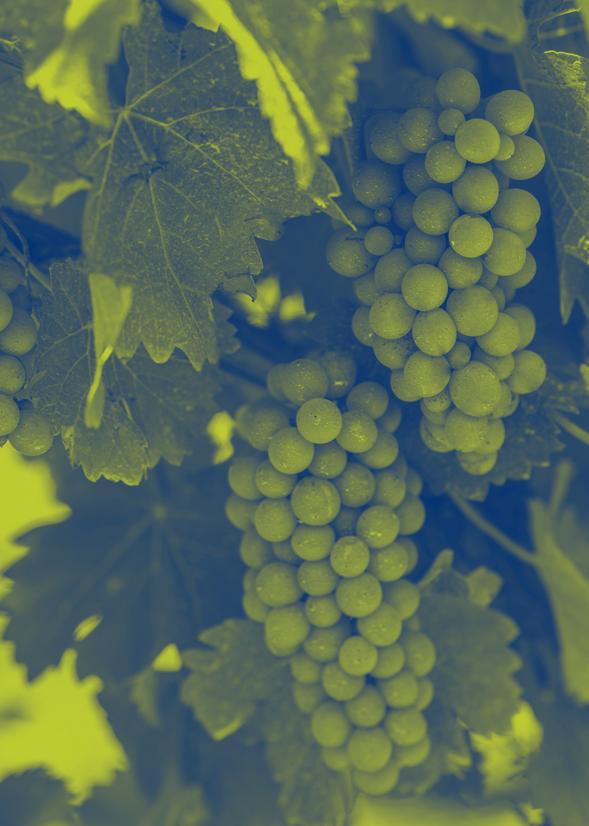




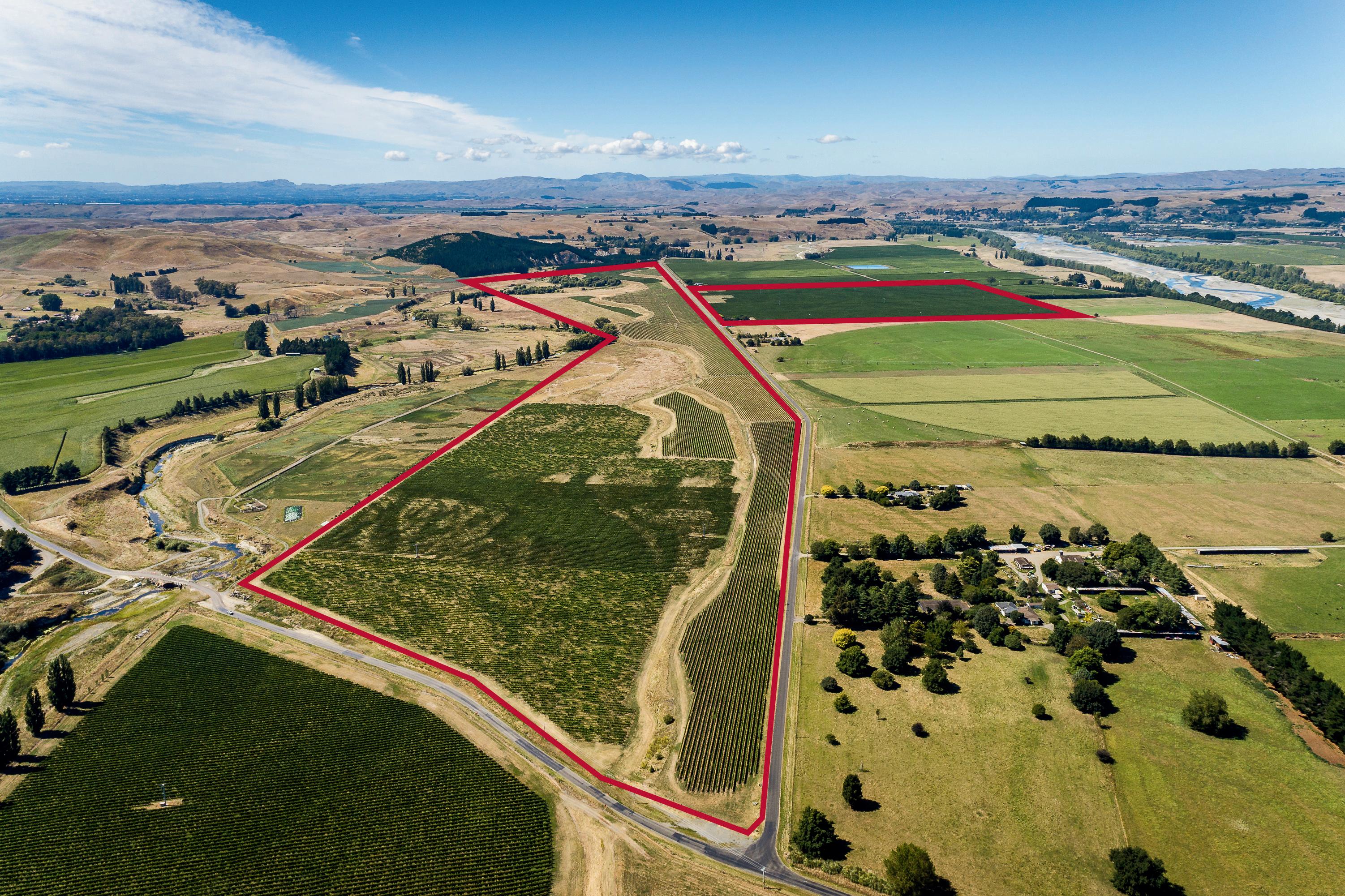
Boundary lines are indicative only

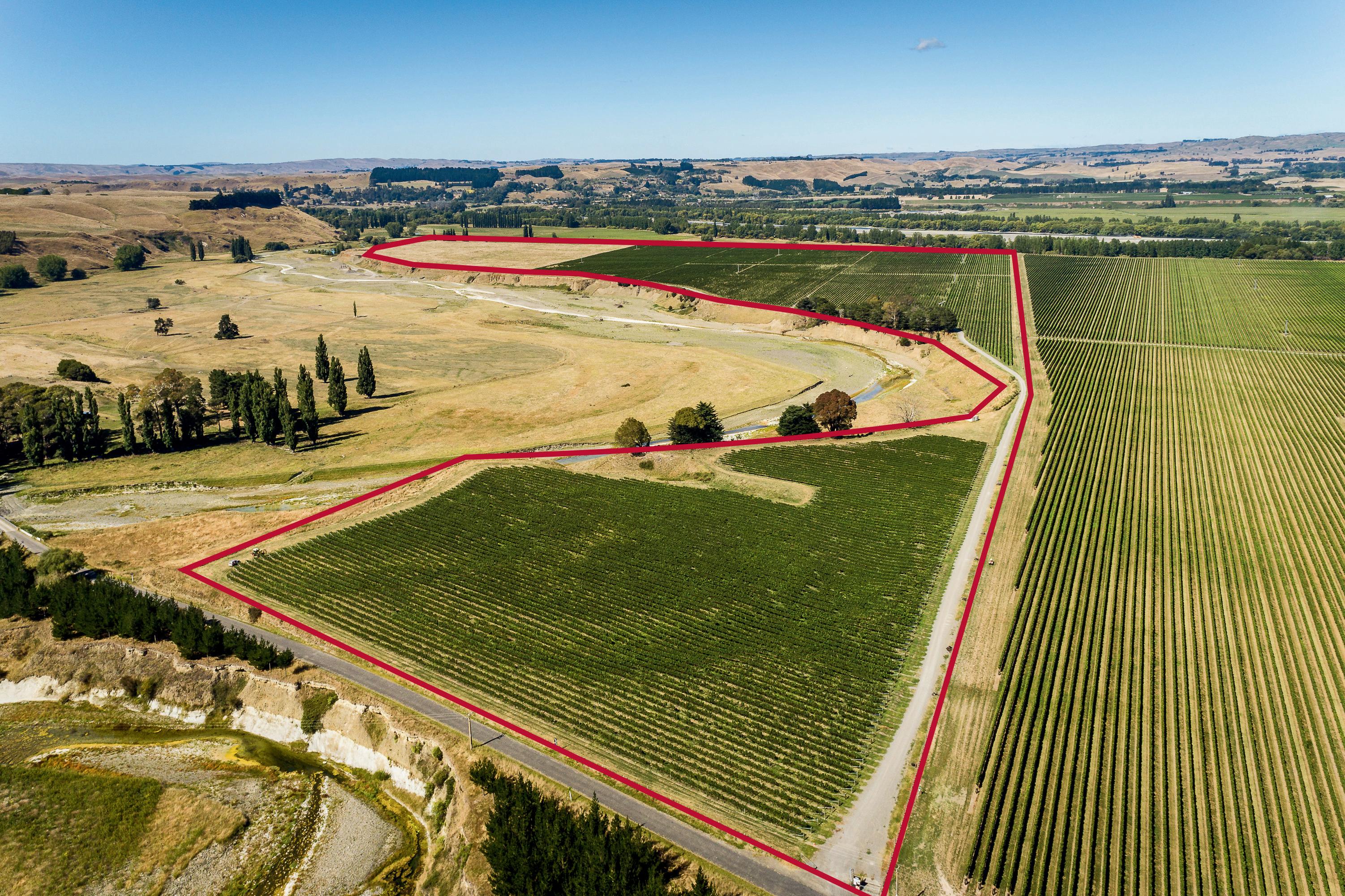
Boundary lines are indicative only



This is a rare opportunity to secure three large vineyards in a very tightly held area of Hawke’s Bay.
The Wine Portfolio covers some 334.2 hectares of viticulture land, located in two prominent winegrowing districts of Hawke's Bay. These areas are renowned for being early cropping, having very consistent production volumes with excellent quality fruit and a great range of varietals, suited to each of the specific sites. Over the years, many award-winning wines have been sourced from these vineyards for multiple wine companies all over the world.
The opportunity consists of ‘Tantallon' vineyard, 119 hectares in total, with 106 hectares planted. Tantallon has excellent access off both State Highway 50 and Maraekakaho Roads. The varietals planted here include; Cabernet Sauvignon, Merlot, Malbec, Syrah, Montepulciano, Chardonnay, Pinot Gris and Viognier. Improvements include a tidy three bedroom house, three bores, office, workshop, implement shed and other ancillary buildings.
The ‘Kinross Jurgen' block is 54.9 hectares in total with 35 hectares planted. This vineyard is located at 404 Omapere Road, Crownthorpe. The varietals planted are Chardonnay and Pinot Noir. The property is located on an elevated terrace headland, overlooking the Ngaruroro river and has additional land that could be planted.
The ‘Kinross Kent' block covers approximately 160 hectares, with 100.8 hectares planted with Chardonnay, Sauvignon Blanc, Gewurztraminer and Pinot Noir. This property lies on a series of river terraces on one side of Omapere Road as well as a regular, square shaped block on the other side. A large family home is located at 166 Omapere Road and is complimented by a staff lunch room, extensive sheds for implements and a large workshop and storage shed.
Offered for sale as individual lots, or as a complete portfolio, this is a prime opportunity to secure an established viticulture operation, or large scale land holdings for alternative use



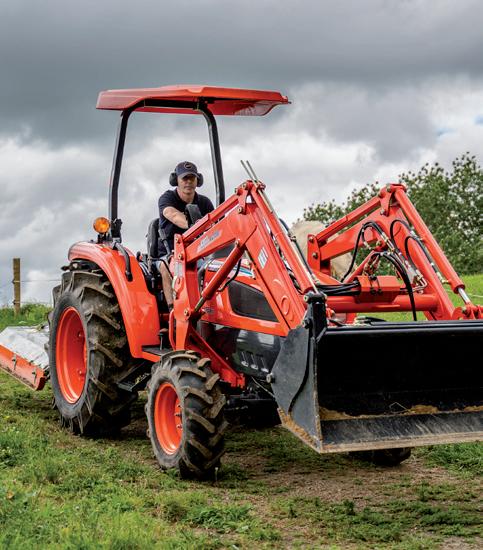
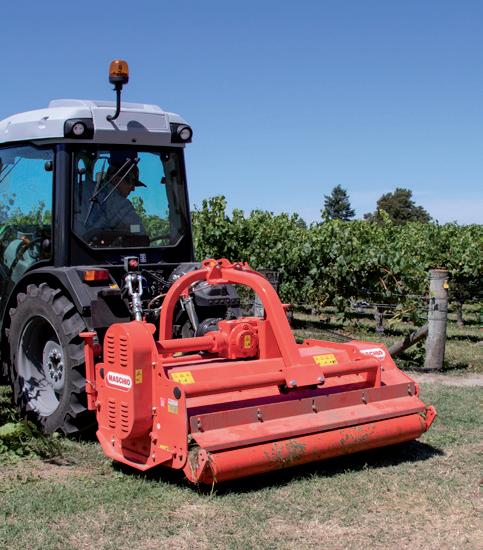
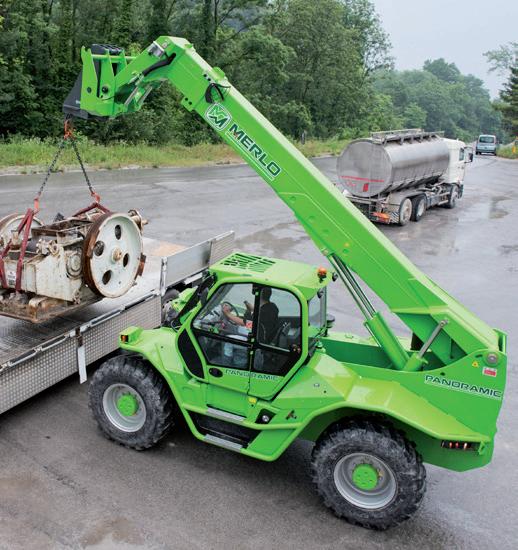

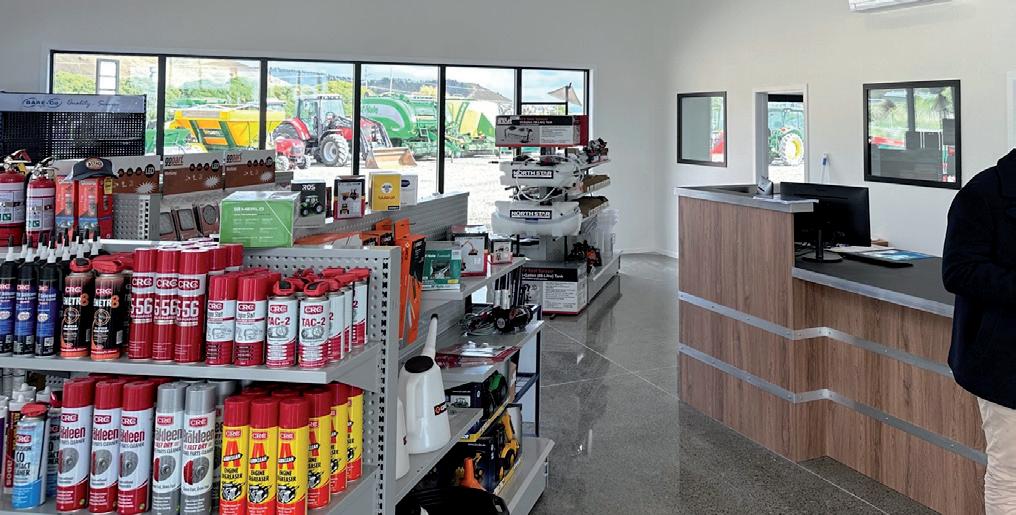

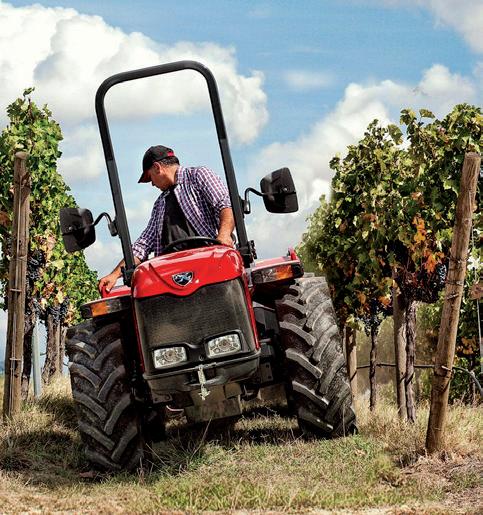
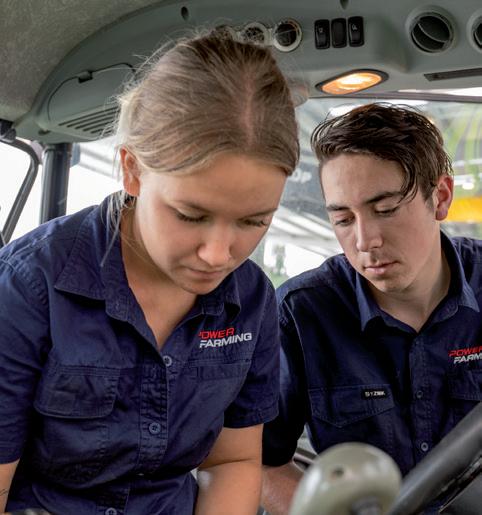
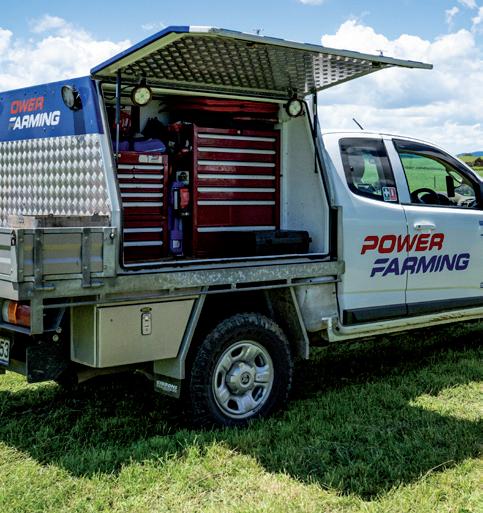
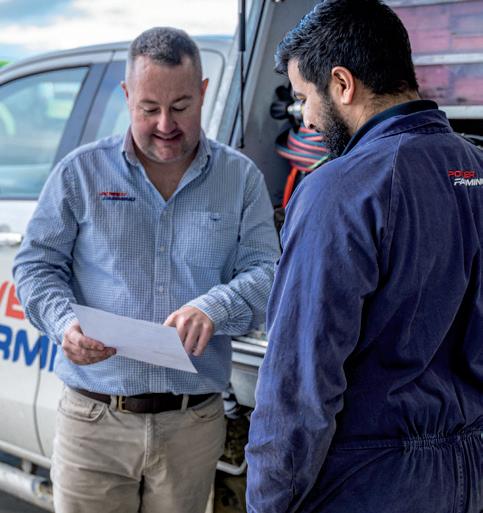









The 2024 harvest has delivered stellar quality and low yields. The season will bring financial ramifications for many, but Marlborough's wine industry remains resilient, says Rosie Jarvis of BDO Marlborough.
The inaugural WinePro New Zealand, to be held in Blenheim in June, is not just an exhibition, says organisers. “Attendees will have the opportunity to explore cutting-edge equipment, discover top-tier suppliers and engage with industry experts.”
As Rob Agnew prepares to hang up his phenology hat, we look at what his work, and VineFacts, have meant for the Marlborough wine industry.






General Manager:
Marcus Pickens 03 577 9299 or 021 831 820 marcus@winemarlborough.nz
Editor:
Sophie Preece 027 308 4455 sophie@sophiepreece.co.nz
Marketing and Communications:
Sarah Linklater 021 704 733
sarah@winemarlborough.nz
Events Manager: Loren Coffey loren@winemarlborough.nz
Advocacy Manager: advocacy@winemarlborough.nz
Advertising:
Joanna May advertising@winemarlborough.nz
Grape Grower Directors: Andrew Nation nationa@gmail.com
Bryn Cotching breezemere@hotmail.com
Michiel Eradus michiel@eraduswines.co.nz
Nigel Sowman nigel@dogpoint.co.nz
Tracy Johnston tracy@dayvinleigh.co.nz
Wine Company Directors: Beth Forrest beth@forrest.co.nz
Damien Yvon damien@closhenri.com
Drew Ellis drew@mggcoop.co.nz
James Macdonald james@hunters.co.nz
Jamie Marfell
Jamie.Marfell@pernod-ricard.com Designed

THIS MONTH’S magazine could have been filled to the brim with stories of innovation and tech in New Zealand’s wine industry, and more specifically in Marlborough. From a robot cruising some Marlborough vineyards this vintage, running field trials with new disease sensing technology, to the fully automated smart spray technology developed by SWE for Pernod Ricard Winemakers (see page 19), to Indevin’s work with Amazon Web Services to collect and manage a vast amount of data, the appetite for new and better ways of doing things continues to drive success.
I visited Indevin’s Bankhouse Vineyard on the last day of its Sauvignon Blanc harvest, to see the “single source of truth” developed to cover every aspect of the harvesting process – from vineyards, harvesters and harvest bins to the trucks and the wineries using internet of things sensors, which provide realtime data on wine presses, loading bins, pumps, flow meters, and temperatures. “Climate change is making harvest periods shorter and more challenging,” says Indevin Group winemaker Jason Cook. “Winemaking is an interesting paradigm of science and art. To make wine you need a positive tension between the two, however the manufacturing of wine lends itself to the ‘facts not feelings’ mantra, so having this data is invaluable.”
Some of that tech talk will be covered in the May Winepress, in the lead up to Tech Week in May, WinePro in June, and the opening of Marlborough’s Tech and Innovation Hub in July. New Zealand’s wine industry is known for its curiosity and innovation, says Wine Marlborough general manager Marcus Pickens in our WinePro preview on page 18. “It’s an ingenuity that helped Marlborough Wine become what it is in 50 short years. Now we are seeing groundbreaking startups working with future-focused growers and wine companies to supercharge that innovation.”
Despite myriad tech topics, the main theme of this edition is, quite predictably, vintage 2024. Because while winegrowing is a year-round game, there are a few weeks where the rubber truly hits the road for viticulturists, winemakers, marketers, accountants, truckdrivers, and an army of international cellar talent. This year’s light harvest, dry conditions, and excellent fruit have made it a “pretty dreamy vintage” says Josh Lee, the Huia winemaker on this month’s cover. “Of the 63 harvests this is the cleanest I have seen, by some margin,” says Matt Thomson, comparing vintage 2024 to his 32 harvests in Marlborough and 31 in the northern hemisphere. “It is incredible.”
There’s financial cost to the light yields, but Rosie Jarvis of BDO Marlborough says the region’s wine industry continues to be resilient, thanks in large part to the “saviour” of Sauvignon Blanc. “While other wine regions around the world turn to the ugly task of ripping out vines, Marlborough’s outlook continues to be positive, despite the pain of smaller lower yielding harvest.”
environmentally responsible paper, produced using elemental chlorine free (EFC), third party pulp from responsible sources, manufactured under the strict ISO 14001 Environmental Management System and is 100% Recyclable.
The Marlborough District Council and Wine Marlborough are working with Expertise Events to help deliver the upcoming WinePro event in Blenheim. Council’s economic development portfolio manager MARK UNWIN explains why the event, along with the launch of a Marlborough Tech and Innovation Hub, will help showcase the region as a vibrant ecosystem for innovative agritech businesses.
THE GOAL for Marlborough to be a leading Agritech region continues to take shape as two key pieces of the activation programme – WinePro and the Tech and Innovation Hub –get underway.
WinePro, an inaugural three-day event in June, will be New Zealand’s most extensive showcase of the wine industry’s equipment and suppliers, with more than 70 international and domestic exhibitors on display at Marlborough Lines Stadium 2000. Organiser Gary FitzRoy from Expertise Events says WinePro will be a unique occasion for people involved in wine production and in the wine industry to connect, and to celebrate their work.
More than 1,000 people are expected to attend, alongside exhibitors, with about 60% of attendees coming from outside of Marlborough, including a number of international delegates. International exhibitors will demonstrate the latest equipment and technologies, such as Vintrace, an Australian ‘wine cloud’ technology with an app for winemakers, and Fermentis, a French business researching yeast and fermentation. Kiwi companies will also travel to Blenheim to showcase their products, such as farm machine dealer Cochranes and fuel provider Fern Energy. There will also be industry-led workshops and guest speakers.
WinePro is an important opportunity for the Marlborough District Council (MDC) Economic Development team to bring visibility to the innovations happening in our region. Marlborough is a great place for new agritech businesses to start up, with world class research, access to early customers, and the new Tech and Innovation Hub opening in July 2024. Events like WinePro provide a showcase to this. The Marlborough Tech and Innovation Hub is to support existing innovators and attract

new agritech, marine-tech and startup businesses in the region. The hub will also help bring visibility and build capacity for entrepreneurship, and help local rangatahi see the opportunities we have in the region.
Globally there is an increasing use of artificial intelligence, robotics, geospatial design, sensor technology and software solutions, being coupled with engineering design to drive innovation, productivity, and labour efficiencies for primary industries. The Marlborough region is experiencing an influx of agritech and marine-tech innovators moving to the region, as design solutions are best achieved at the hub of where the main activity occurs.
The hub will allow Marlborough to leverage its existing competitive advantage in viticulture and aquaculture sectors by using natural clustering of industry intelligence to lead the country in agritech and marine-tech innovation. The expected benefits are:
• Increased productivity, efficiencies, and environmental solutions for the primary sector
• Attracting and actively supporting new tech and startup business to Marlborough
• Extending the region’s existing competitive advantage contributing to new highly paid jobs and increasing income in the region
The hub will connect innovators with existing research specialists from The New Zealand Wine Centre, Sanford Bioactives Innovation Centre, Bragato Research Institute, Cawthron and NIWA. It will provide a collaboration space where existing agribusiness, tech innovators, researchers, investors, and support agencies connect through shared workspaces, start-up events, seminars and workshops.
Gary Fitz Roy says working on WinePro has been an opportunity to see the vision of the MDC come to life, with support from key representative bodies and individuals pulling together to deliver something that sets a whole new event benchmark in the industry. “I am sure everyone will be proud to have this world standard event now established in New Zealand.”
In the past three years as advocacy manager at Wine Marlborough, Nicci Armour has helped forge and lead myriad projects, including several helping the industry navigate the challenges of Covid-19. In the wake of the pandemic, she’s helped drive Wine Industry Wellness Week, Circular Wine, and the Workforce Steering Group, including a major national survey into skills requirements, now and into the future.
What does leadership mean to you?
Leadership is multidimensional, but for me it does come down to a couple of simple principles: committing to having a positive impact on the people around me, and every day moving in a direction that is good for the world. It means understanding the interconnectedness between the people, businesses, and communities that I am connected to and holding myself accountable to support good outcomes that work for them. It doesn’t mean having or doing it all or never making a mistake. Instead, it’s the willingness to listen, learn, and work together and courageously navigating a path forward, even when it is unclear. My leadership journey is a conscious, ongoing effort to learn and grow, bringing those around me along for the ride.
What are key leadership challenges and opportunities?
Effective leadership creates psychologically safe (or better yet, brave) environments and is underpinned by inclusivity. But it can be a real challenge to know how to create supportive, inclusive environments for everyone, particularly when our communities and workplaces are more diverse than ever. Leaders don’t always have the direct experience needed to help them relate to their people off the bat, but getting curious has been a useful approach for me here.
What’s the Leadership Working Group ?

"My leadership journey is a conscious, ongoing effort to learn and grow, bringing those around me along for the ride."
Nicci Armour
This group has a focus on activating a strong leadership culture and capability across the Marlborough region. Through the wine industry workforce steering group we recognised that leadership is a critical enabler to ensuring a sustainable, successful wine industry where people thrive. Several of us got interested in how we might activate leadership beyond the individual or business level and recognised the potential benefits to all business in Marlborough. What might a region that prioritised leadership be like? How would it feel to be part of a business that elevated leadership? If we as a region had strong leadership capability and culture, could we attract and retain more talent, could we increase productivity and sustainability, what could the flow on effects to the wider community be? Right now, we are in the process of designing a cohort-based leadership programme for Marlborough changemakers with Digby Scott and we’re aiming to kick off in May.
You’ve recently taken up a new role. Will you remain part of the working group?
Absolutely!
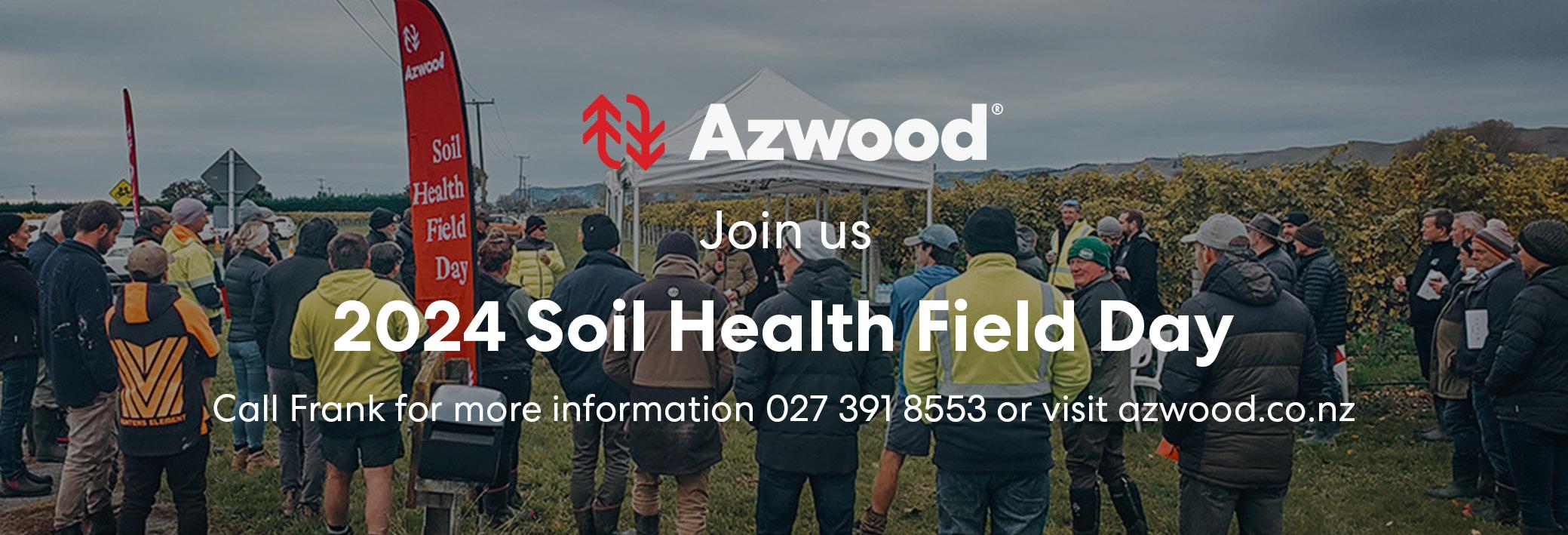


No ground or air frosts were recorded during March 2024. The coldest minimum air temperature was 2.3°C which was recorded on 30 March. The grass minimum temperature on 30 March was -0.6°C. The hottest maximum temperature of 26.9°C was recorded on 2 March.
Blenheim recorded 262.9 hours sunshine in March, 114% of the LTA.
Blenheim recorded well above average sunshine hours in March and is at the top of the table for the month’s total compared with various other towns.
are calculated from absolute daily maximum and minimum temperatures
2GDD’s Mean are calculated from average hourly temperatures
Blenheim’s mean air temperature in March was 14.9°C, 1.2°C below the long-term average (LTA).
Total sunshine for the first three months of 2024 is 867.0 hours, 120% of the LTA. For the first three months of the year Richmond is leading the way (869.3 hours) with Blenheim close behind in second place (867.0 hours) followed by Appleby (854.7 hours). Richmond recorded 617.6 hours in January and February which were 13.5 hours more than Blenheim, however the roles were reversed in March as Blenheim recorded 11.2 hours more than Richmond, thus closing the gap between the two locations by 2.3 hours.
Blenheim recorded 25.0 mm rain in March, 62% of the LTA. There were two rain days during the month; i.e. days that recorded 1.0 mm or more rain. From July 2023 to March 2024 there has been 209.8 mm of rain compared with the LTA of 466.4 mm. So far each of these 9 months has been below its monthly LTA with December, January and February being the lowest in relation to their LTA (30%, 16% and 26% respectively). Rainfall for September to March was 161.6 mm, 48% of the LTA.
Average shallow soil moisture (5-35 cm depth) at the Grovetown Park weather station during March was 16.8%. This was well below the LTA March value of 20.4%.
March 2024 recorded average daily wind run of 228.0 km, 96% of the LTA of 237.6 km (1996-2023). While March recorded lower than average wind-run it was considerably windier than the previous 10 years. There were 11 days in March that recorded above average daily wind-run. The maximum instantaneous wind-gust recorded during the month was 61.2 km/ hr on 4 March. The highest daily wind-run was 388 km on 2 and 8 March.
Botrytis comparison between the 2022, 2023 and 2024 seasons (September to March)
With the lower than average rain from September 2023 to March 2024, the number of Botrytis infection periods has also been low. Comparisons between this current season with the last two seasons have been included to highlight the seasonal differences. The infection period data come from the Blenheim weather station located at the Grovetown Park campus of the Marlborough Research Centre. The disease scores at harvest were taken from three of the regional Sauvignon blanc blocks that are monitored as part of the VineFacts phenology programme.
Table 3 summarises the severe Bacchus Botrytis infection periods (IP) during the 2021-22, 2022-23 and 2023-24 seasons. The top three lines summarise the infection periods from 15 November, just prior to the start of flowering, through to 31 March. This is essentially the full season when Botrytis can infect the developing berries. There were stark seasonal differences, with 2023-24 recording 3 infection periods compared with 21 infection periods in 2022-23 and 12 infection period in 2021-22. In addition to this there were no severe infection periods recorded during the ripening period in 2024.
Table 3: Summary of Bacchus Botrytis infection periods during the 2021-22, 2022-23 and 2023-24 seasons
The fruit ripening periods in 2022 and 2023 (from February to the end of March) had similar numbers of infection periods and temperatures but differed in total rain and hours of leaf wetness with 2022 being greater than 2023. The lower than average rain in February and March 2024 and cooler temperatures in March did not induce any infection periods.
As has been previously written in Met Report it is the infection events over the ripening period that determine the expression of disease at harvest. The total hours of wetness and total rainfall over the ripening period in February and March 2022 were a lot higher than in February and March 2023. February 2022 was extremely wet with 153.4 mm rain. This gave botrytis a massive kick start in the early stages of ripening.
Table 4 summarises the incidence and severity of botrytis bunch rot from three Sauvignon blanc blocks in Marlborough. Prior to harvesting the fruit at each block, 160 random bunches were visually assessed for botrytis bunch rot for their incidence and severity. The seasonal differences for these two parameters are interesting to compare; at the Central Rapaura block the disease incidence was very similar in 2022 and 2023, while disease severity was 5.4% in 2022 and 1.3% in 2023 but in 2024 no botrytis bunch rot was found. At the Upper Brancott block incidence and severity were high in 2022 at 98.8% and 49.2% respectively, whereas in 2023 incidence and severity were only 26.3% and 1.7%. Again in 2024 no botrytis bunch rot was found. At the Western Wairau block disease incidence was slightly higher in 2023 while disease severity was almost identical in both years but in 2024 there was no botrytis bunch rot.
Table 4: Incidence and severity of botrytis bunch rot at harvest in 2022, 2023 and 2024 from three Sauvignon blanc blocks in Marlborough

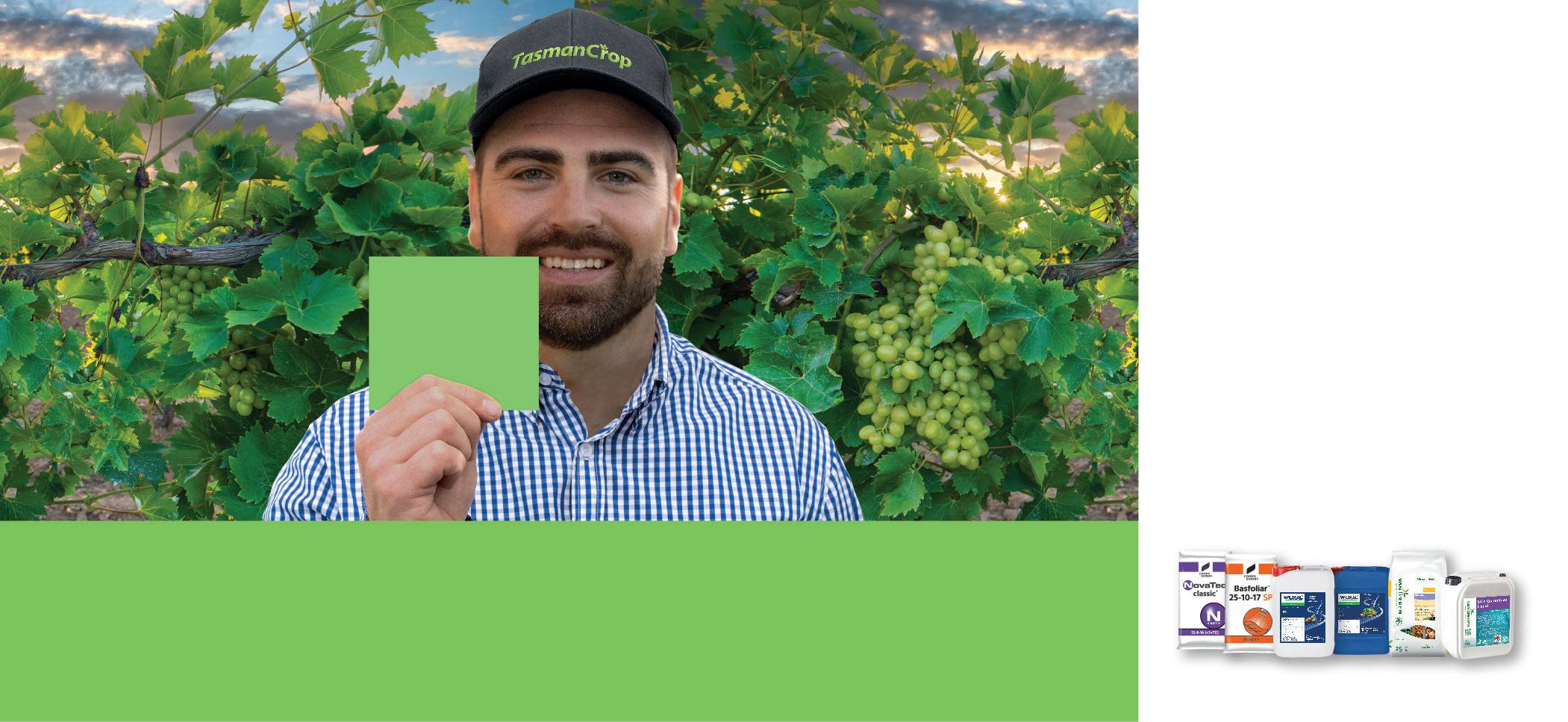


With millions of intermediary vineyard posts damaged in Marlborough each year, ECO TRELLIS® has a solution that will save you both time and money.
• Structural strength
• Bulge adds strength
• Ease of installation and handling
• Recyclable
• Longer product life cycle
• Environmentally friendly
• Pre-punched hole positions
• Patented clip range
• No tyre punctures
• Rolled top for netting
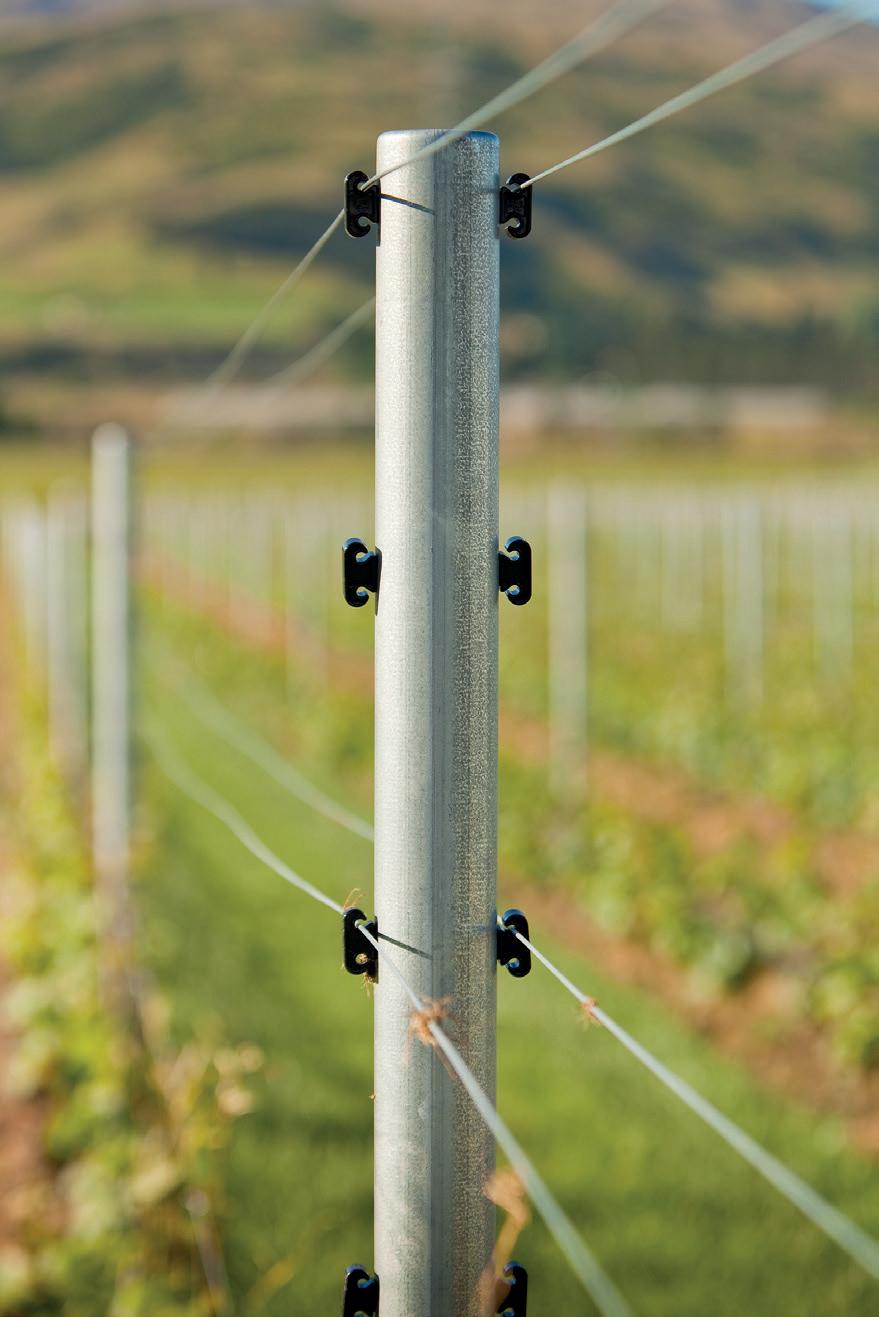

“Of the 63 harvests this is the cleanest I have seen, by some margin. It is incredible.”
MARLBOROUGH’S 2024 grape harvest will bring financial pressure for many, with low yields and burgeoning costs exacerbated by high interest rates. But the wines from the year have potential to be the region’s best yet, says winemaker Matt Thomson at the tail end of his 63rd harvest, with 32 of them in Marlborough. “You don’t know until the wines are made and finished, but this feels like the best vintage in those 63 harvests. It’s quite incredible.”
Speaking as he and Blank Canvas co-owner Sophie Parker-Thomson MW drive high up the Awatere Valley, trucking bins to their last Pinot Noir handpick of the year, Matt says the season could have been dialled up for winemakers, with low yields, warm days, ultra dry conditions, and an autumnal shift to cold nights in March. “You couldn’t have asked for better from a timing point of view.”
The cold nights protect acidity retention and aromatics, while also guarding the fruit from disease, Matt says. Loose bunches from a poor flowering also reduced disease risk, while the region’s drought conditions have prevented the growth of botrytis spores. That combination has resulted in the cleanest harvest in his winemaking career, “by some margin”, Matt says. “We have had days when we haven’t
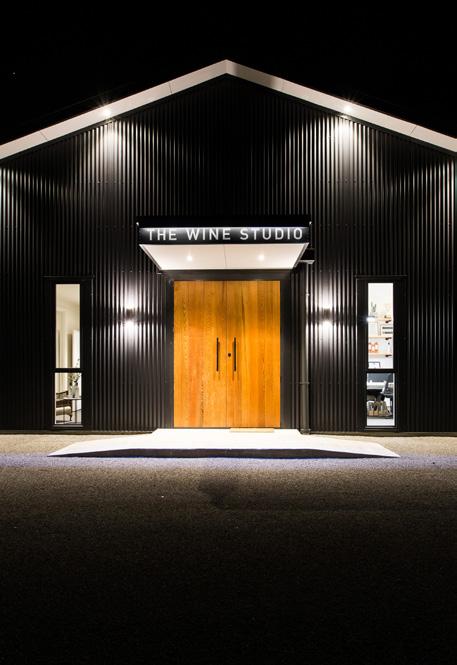
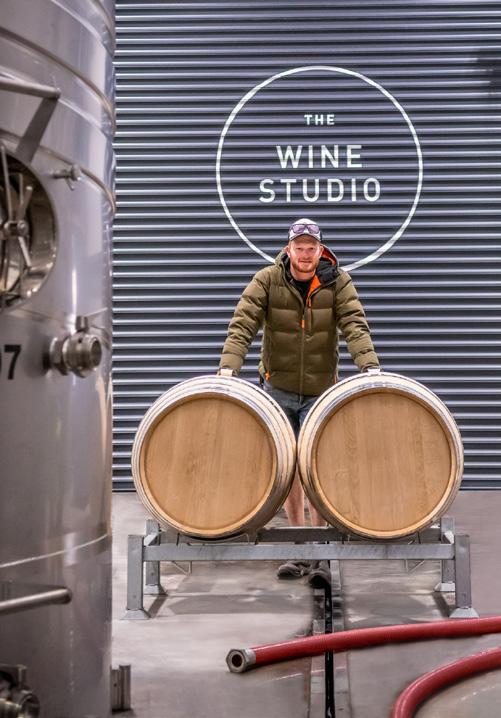
Matt Thomson
seen one botrytised berry.” And the fruit is “amazing” he adds. “If you can’t make good wine as a winemaker this year, you need to consider a career change.”
Despite stellar quality, low yields will have financial ramifications for many in the region, Sophie says, noting the direct impact on growers and contract winemaking facilities. “From a macro perspective the district will have a hard year… It’s pretty frightening for some people.” The couple say there will be pain, but the light crop is what the region “desperately needed”, with the stock still in tanks from 2023. “We have the opportunity now to reset, and I just desperately hope that people learn from what was a very stressful situation last year, with a global downturn in spending,” Matt says. “There are a few people out there who are taking shots at Marlborough and we have to make sure that all the wine coming out of our region is good enough to wear the Marlborough brand.”
He adds that Marlborough is known for a product
with a perceived short shelf life, while facing yield fluctuations of more than 50% from year to year. “That’s a huge issue in managing that demand-supply balance. That’s something as an industry and region we need to address urgently – how do we soften those over supply, under supply situations? That’s a challenge.”
Foley Wine’s group winemaker Stu Marfell says the lower yielding vintage will take some pressure off the industry at large, with “some bigger picture pressures” impacting demand. “While the low yields will be tough on growers and wineries, the lighter vintage will be good for Marlborough in general.”
Speaking on March 21, with a big, blue-skied day following a cold frost-fighting morning, he says the classic autumn conditions, with a strong diurnal shift, are perfect for Marlborough grape growing. “We are getting really good acid and so much flavour.” By early March he was a little concerned at how rapidly fruit was ripening in hot summer conditions, “but the switch got flicked from summer to autumn overnight really”, he says, noting the perfect timing for the Pinot Noir and
The Marlborough wine industry remains resilient, despite rising costs and interest rates, and a significant drop in yields this season, says BDO Marlborough associate Rosie Jarvis. BDO offers accountancy services to many grower and winery operations in Marlborough, and Rosie says that while growers who have recently taken on debt to expand operations will be “feeling the pinch”, they should continue to have the support of their banks due to the sensitivity testing undertaken by the financiers at the time of any new vineyard acquisition. “We are busy working with clients to pull together financial forecasts and re-estimate the third instalment of provisional tax which is due 28 July for those growers with a 30 June balance date to keep the cash on hand.” Marlborough has been “relatively immune” from wider economic conditions in New Zealand over the past decade, Rosie says. “However, with the lower payments to growers, soft wine sales, and increasing costs, discretionary spending is dropping.” The region’s “saviour” is the relative steadiness in demand for Marlborough’s Sauvignon Blanc, she adds. “While other wine regions around the world turn to the ugly task of ripping out vines, Marlborough’s outlook continues to be positive, despite the pain of smaller lower yielding harvest.”
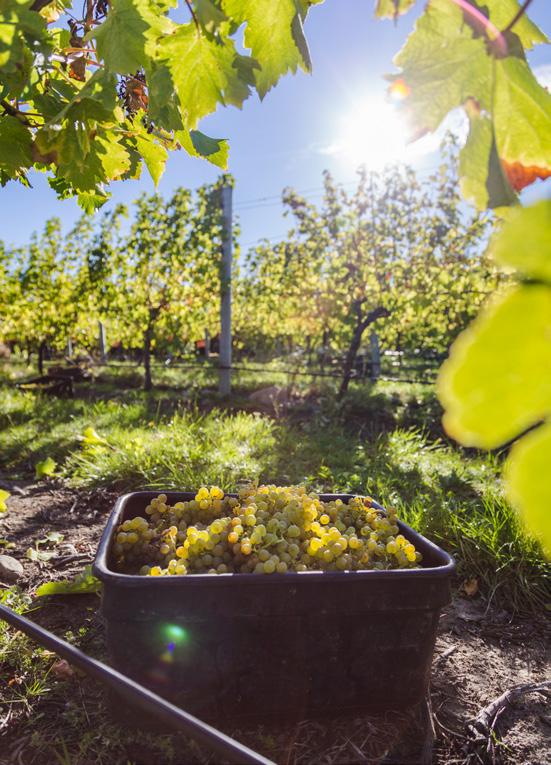
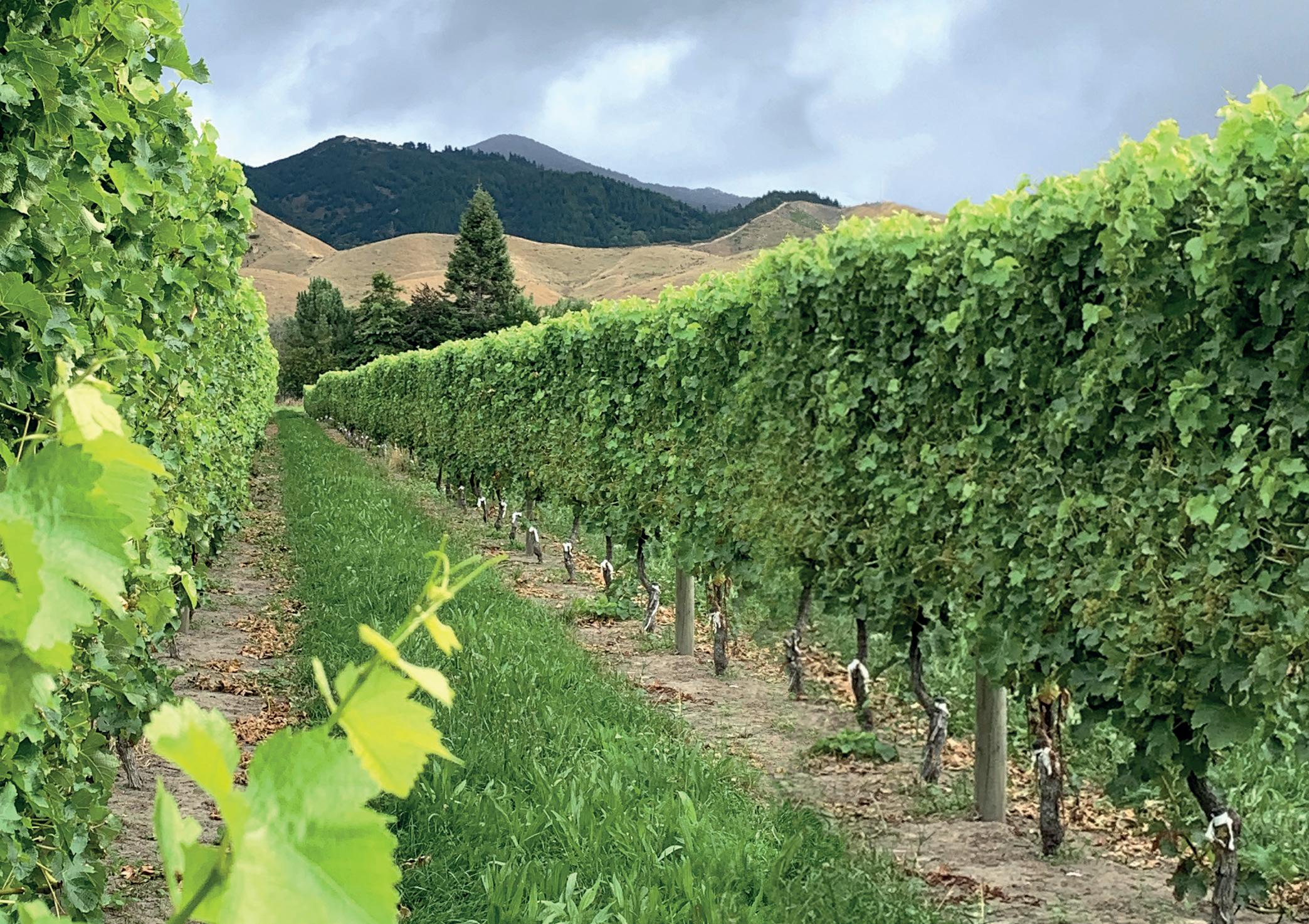
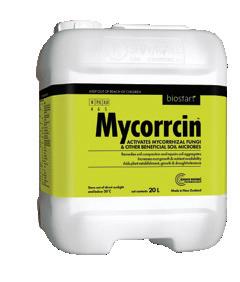

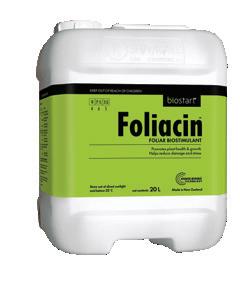
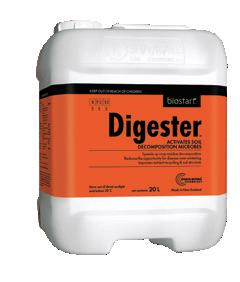
Harvest is the busiest time of year at the Bragato Research Winery, with hundreds of ferments underway for industry research projects and commercial trials. The catch? The winery’s 17 litre tanks require just 40kg of whole cluster grapes. This means different variables can be tested under rigorous conditions on an accessible and manageable scale.

Chardonnay harvest. There’s opportunity to make “amazing” wines, he adds. “Everything is superpowered; bright and intense.”
Low yields and a hot dry summer have made this the earliest harvest ever for Grove Mill and Vavasour Wineries, both owned by Foley Wines, with the crop levels down in the Awatere and Wairau Valley. Stu expects his harvest to be over before April, in one of the earliest finishes he’s experienced. In the meantime, they’ll be hoping for more nights that are cold enough to lock in flavour, but not cold enough to frost. “It’s cool climate winemaking; that’s what we do.”
According to VineFacts, the three-month rainfall total to March 19 was well below half of average (42%), while evapotranspiration was well above average at 111%. That put the three-month water balance at -384.8 mm, which is 120mm lower than the long-term average. Framingham viticulturist James Bowskill says water has definitely been a pressure point this season. “We had to prioritise blocks within vineyards to get more water, and run others a little drier than we’d like. On the whole, we got through well, and the benefits of reduced disease pressure outweighed the drawbacks of restricted irrigation,” James says. “I would choose a dry year over a wet year every time.” The company’s harvest dates were close to long term average, but much earlier than last year, and the harvest period was shorter than the long-term average. Their yields are good, apart from Sauvignon Blanc, “which is pretty light”, James says, putting that down to a combination of spring frosts and “miserable” weather during flowering. Meanwhile, quality is great, with “low yields of very ripe, clean fruit”, he says. “Should be some pretty cool wines.” That includes a “return to form” for Gewürztraminer, “so it’ll be nice to see the wines made from that variety in 2024”.
Clos Henri, in the Wairau Valley, began its Sauvignon Blanc harvest on March 20 and Pinot Noir the following

day. The fruit is “amazing”, says general manager and winemaker Damien Yvon. “Ripening in the cooler spectrum will probably give us one of the finest expression that we can have… It reminds me of the first few vintages when I came here 18 years ago: no stress, cool mornings, warm afternoons…the best ripening conditions you can get.” In the Sauvignon Blanc, acidity is not very high but Ph has also stayed low, “so will make wine with beautiful tension, that will age very, very well,” Damien adds. “It’s very unusual, but a really, really good sign.” He’s philosophical about the lighter yields this season. “You are better to have one too few bottles that one too many.”
“It’s been a pretty dreamy vintage,” says Huia Winemaker Josh Lee. “The weather has been fantastic. Our viticultural team have done a fantastic job, making life in the winery pretty easy really.” Huia was bought by Tom Pegler in 2022, after 26 years in the Allan family, and Josh joined in August last year, just in time for a harvest blessed
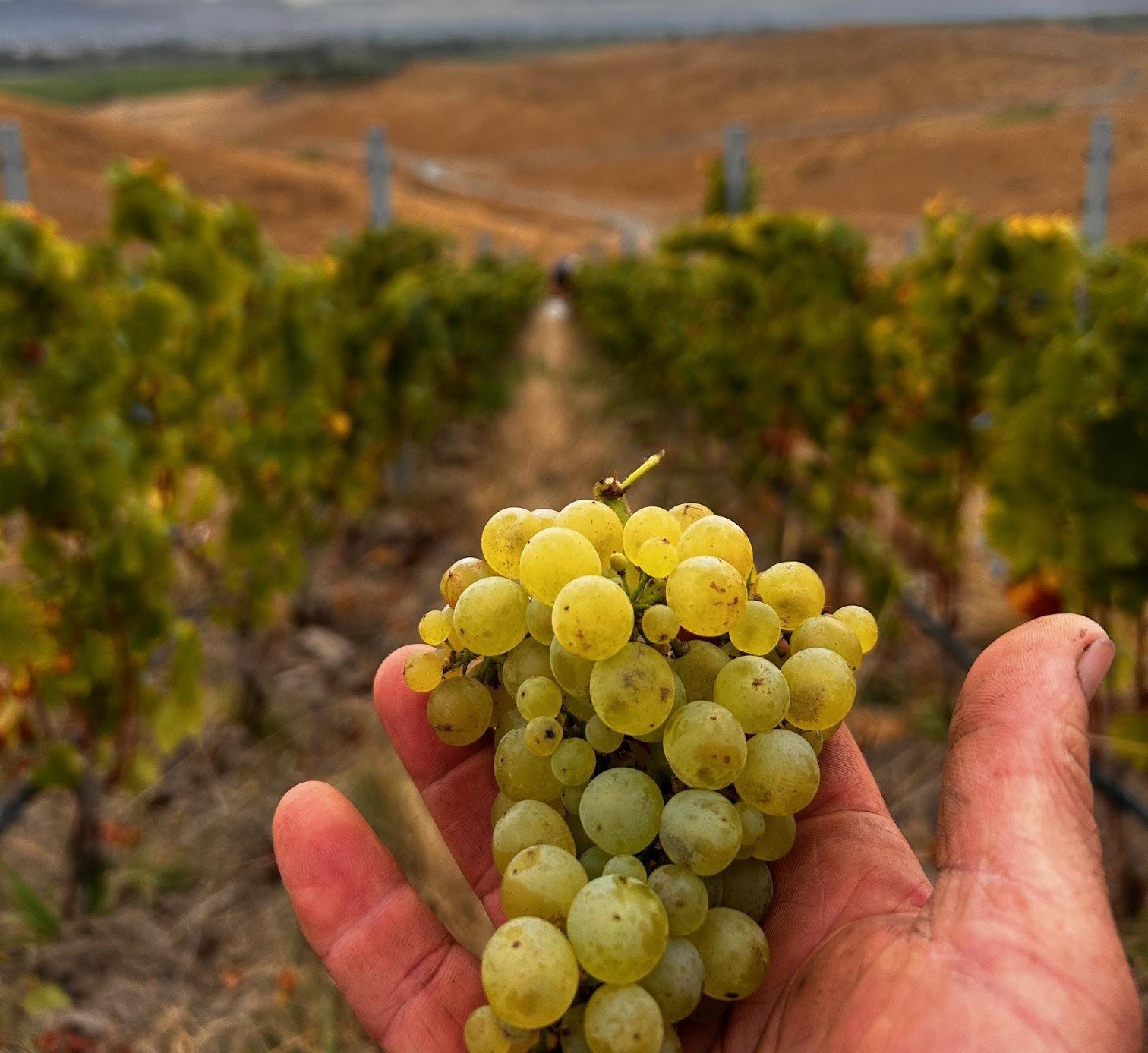

Zoning Urban Residential 2 Z 30-year triple net lease commenced 31st March 2022
Growth investment with the security of long-term cash flow
Waterlea Lifecare comprises a 61-bed care facility, currently providing full rest home, respite, dementia care and medical services located in the residential suburb of Springlands, approximately 2km’s from Blenheim CBD. The property is leased to Heritage Lifecare (BPA) Limited, one of the largest aged care providers in New Zealand, returning an annual net rental of $419,012 plus GST and outgoings.
Underpinned by high levels of government funding and increasing demand from New Zealand’s rapidly ageing population, this asset will appeal to astute investors seeking a premium, hands-off investment positioned in the sought-after healthcare sector experiencing strong growth. bayleys.co.nz/1904653
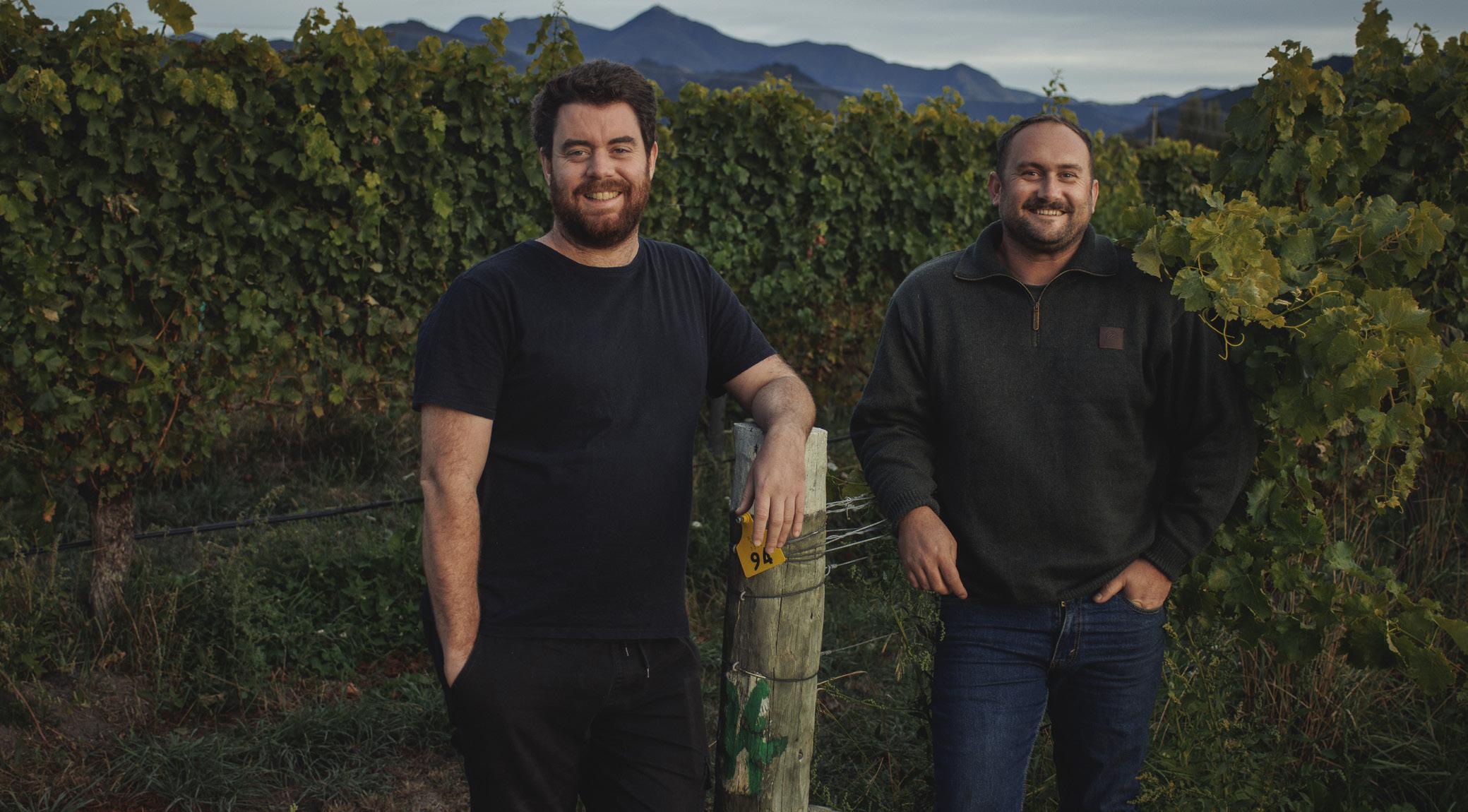
by great weather. “Everything is looking really exciting,” he says on March 25, as Huia cracks into a Sauvignon Blanc harvest that is later than he expected, given the fruit for méthode traditionnelle came on early and rapidly, with a swift harvest in late February. Josh says the longer tail to the harvest, with continued fine weather, means Sauvignon Blanc can happily hang for optimal ripeness.
Riverby Estate had completed picking the bulk of its grapes by March 21, in their earliest finish ever. Co-owner Kevin Courtney says it should be a quality vintage. “We’ve had no disease, no rain and the fruit is looking exceptional.” However, cooler temperatures and rain during flowering resulted in significantly reduced bunch and berry size. “Given where we are in Jackson’s Road, with our sandy, loamy soils, we naturally crop lower than most,” Kevin says. “But this year we’re down by about a third across the board - the lowest we’ve ever seen.” The “usually bullet proof” Grüner Veltliner was the worst affected, down by almost 50%.
Many of the region’s grape growers escaped water restrictions this summer, thanks to “little top ups” of rain in the catchment at fortuitous times. Charlotte Tomlinson, who is an environmental scientist, hydrology, at Marlborough District Council, says that by the time the Wairau River was fully restricted in late March, harvest was well underway. The region’s water concerns are far from over, however, with the Wairau Aquifer at its lowest levels since records began in the 1970s, thanks to a dry winter and summer, irrigation pressures in the dry season, and a downward trend in the aquifer levels since 1973, which has been linked to river works.
“It’s been a pretty dreamy vintage.”
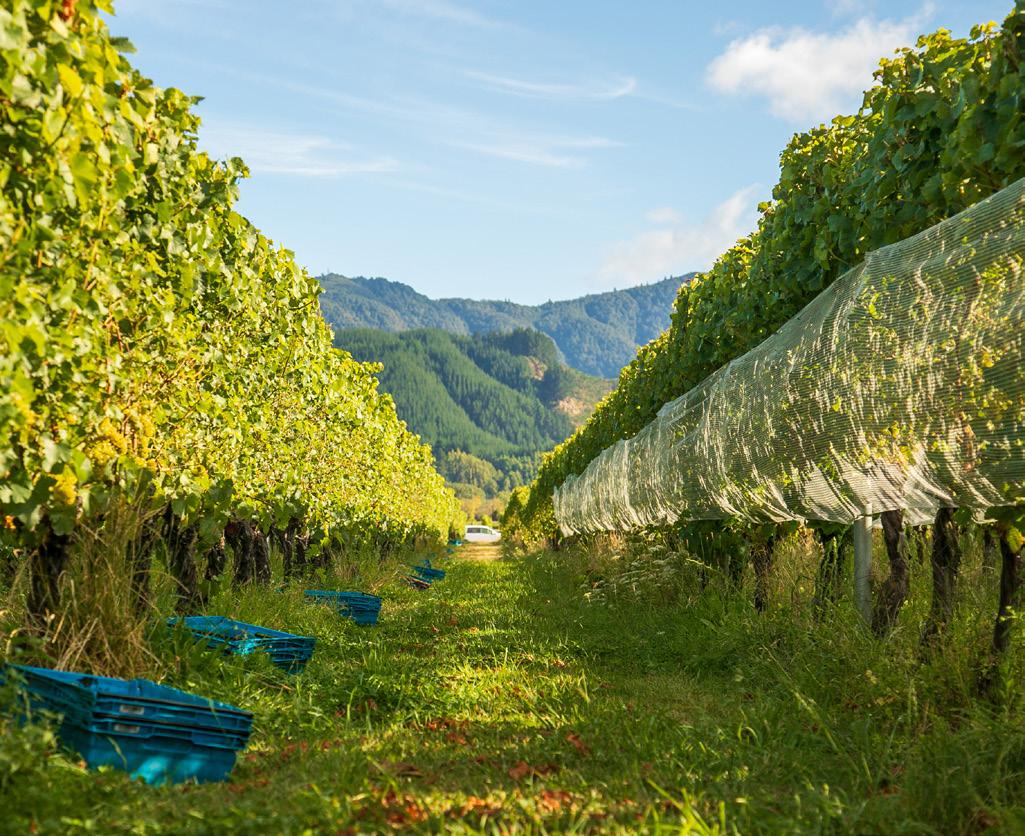
No.1 Family Estate started harvest for its méthode traditionnelle on February 29 with Pinot Noir, followed by Chardonnay then Pinot Meunier, and wound up on March 9. Winemaker and Winery Manager Lee Dobson says they enjoyed an “exceptional flowering” for all varieties, followed by the “dream scenario” of a dry 2024 summer. “Zero disease pressure in the vineyard led to superb fruit quality with fantastic acid structure. I can’t wait to see how these wines will turn out in two to three years’ time.”



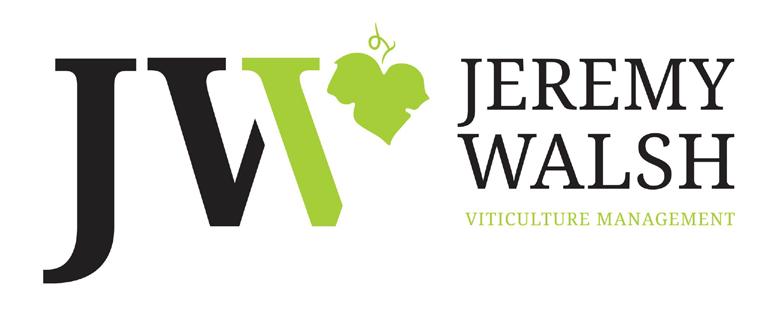
JWVM has capacity for the coming season. We welcome new clients to our management portfolio.
WE OFFER OUR CLIENTS: Fully customisable management plans, A team of quality, experienced operators, Excellent machinery and equipment, High standards of service & viticultural support.
We are geared up for all your redevelopment needs.
Call: Jeremy 021-556722 | Shane 021-615154
www.jwvm.co.nz | @jwvm.nz
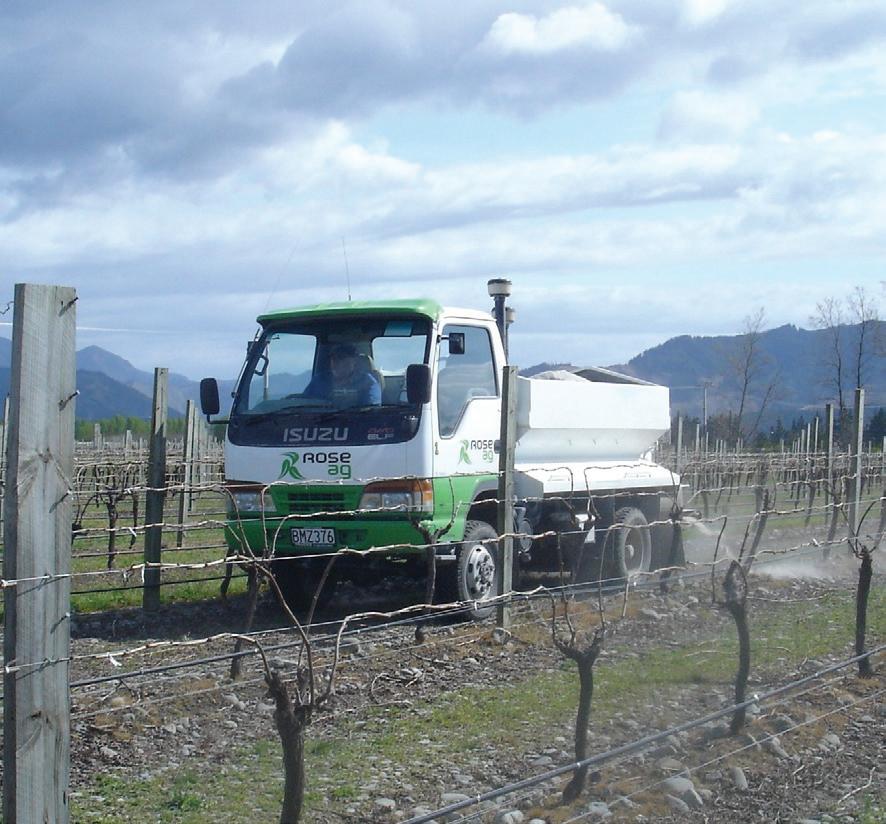


• Commercial & Industrial Electricians
• Automation & Control systems
• Winery Upgrades
• Winery Design & Build
24/7 EMERGENCY
CALL OUT
Phone: 0274 497 689
Email: admin@electratech.co.nz
Website: www.electratech.co.nz
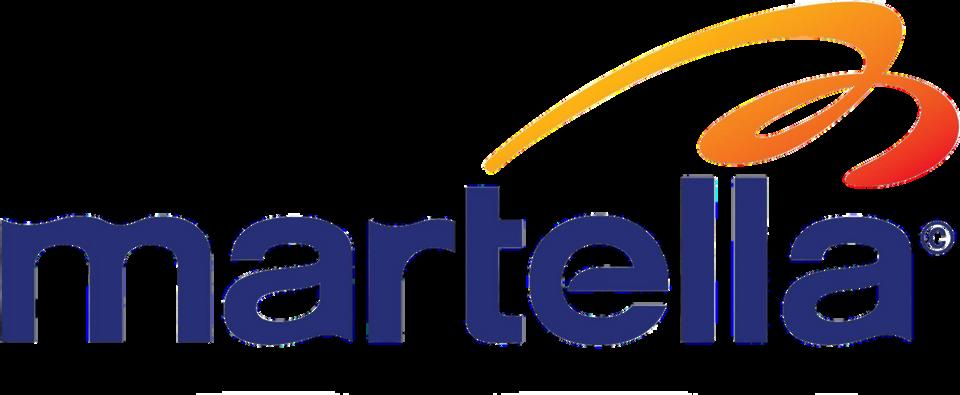
REFRIGERATION & AIR CONDITIONING
Design & Installation
Maintenance & Service
Hire Chiller Solutions
Repairs - call 24/7
Your local specialists for over 40 years


1 Freswick St, Blenheim | www martella co nz
Email: office@martella.co.nz
Phone: 03 578 0030 - 24/7
WINEPRO New Zealand will be an “immersive experience”, bringing together more than 70 industry suppliers from around the world, and the latest innovations and technologies, says show organiser Gary FitzRoy. “As participants immerse themselves in the world of WinePro New Zealand, they’ll experience first-hand the passion and dedication that make New Zealand a global powerhouse in wine production.”
The inaugural WinePro, being held in Blenheim from June 25 to 27, has been developed with support from Wine Marlborough and Marlborough District Council (MDC), and from an expert steering group that helped develop content for education sessions running across the three days. The event will include an industry-led conference themed ‘Innovate, Elevate, Celebrate’, with discussions on emerging trends, sustainable practices and technological advancements, and MDC economic development portfolio manager Mark Unwin (see page 6) says it’s an important opportunity to bring visibility to the innovations happening in the region. “Marlborough is a great place for new agritech businesses to start up, with world class research, access to early customers, and the new Tech and Innovation Hub opening in July 2024. Events like WinePro provide a showcase to this.”
Wine Marlborough general manager Marcus Pickens says New Zealand’s wine industry is known for its curiosity and innovation, and an ability to take new research and technology into the field and winery. “It’s an ingenuity that helped Marlborough Wine become what it is in 50 short years. Now we are seeing groundbreaking startups

working with future-focused growers and wine companies to supercharge that innovation. WinePro will be an exciting showcase of how far we have come, and how we can continue to make ever better wines while protecting the environment that grows them.”
Marcus says MDC, Wine Marlborough and Expertise Events have found excellent industry guidance from the steering group, comprised of Tracy Atkin, Heath Stafford and Ben McLauchlan. “ They have helped us build an exciting series of education sessions that will shine a light on innovations changing our industry right now, as well as those on the horizon.” The educational programme will be released in April, with daily ticket options, as well as the full programme of sessions.
Chandler Glass and Packaging, Grapeworks New Zealand, Hydralada, Olavin and Winequip are some of the companies set to present their products and services at the event, along with innovators like Australian company Vintrace, with ‘wine cloud’ technology, and French company Fermentis, experts in yeasts and fermentation. BRI will run Grape Days Marlborough in the lead up to the event, sharing industry research on Monday June 24. winepro.co.nz

New fully automated spray technology is making viticultural processes “smarter, faster, and safer” says Stephen Leitch, director at Marlborough-based water engineering company SWE.
SWE (Southern Water Engineering) worked with Pernod Ricard Winemakers to develop the SmartSpray solution, which automates the vineyard spray mixing process and minimises manual and chemical handling. The innovative technology, which has been installed at Brancott Vineyard in Marlborough, uses an automated pumping and injection system with advanced programming to ensure tractor spraying units receive the exact right quantity, composition and dilution of solution, tailored to each specific job.
The process allows vineyard operators to complete spray mixing in just 25% of the time previously required, Stephen says, following SWE being named as a finalist in the NZ Hi-Tech Awards for the technology. “The previous standard practice for spraying in the vineyard required operators to dress in PPE, put gloves on, mix up the chemical solution, put it into the spray unit and then take all the PPE gear off and hang it up before they’re able to complete the cycle of spraying. Then they’d have to come back and do it all again for the next cycle… Operators can now simply connect a hose and push a couple of buttons to start the automated filling process, then they are good to go.”
Lesley Boon, Pernod Ricard Winemakers’ viticulture manager – South Island operations, says the project stemmed from a desire to upgrade the Brancott Vineyard spray shed, “to bring it into the future to be safer, smarter and more adaptable”. It represents a significant advancement in viticultural technology, Lesley says. “It not only benefits vineyard operators but also contributes to environmental sustainability, while enhancing productivity, accuracy, and traceability within the viticulture industry, setting new standards for operational excellence.”
SWE is one of the exhibitors at WinePro New Zealand in Blenheim this June.
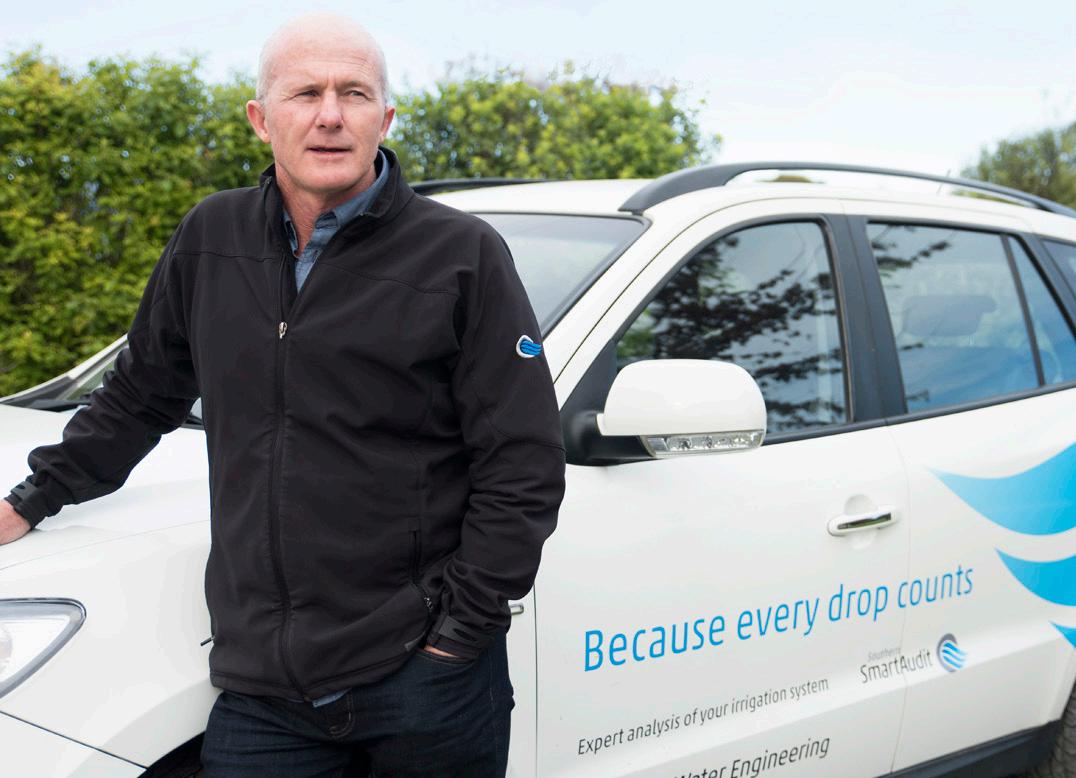
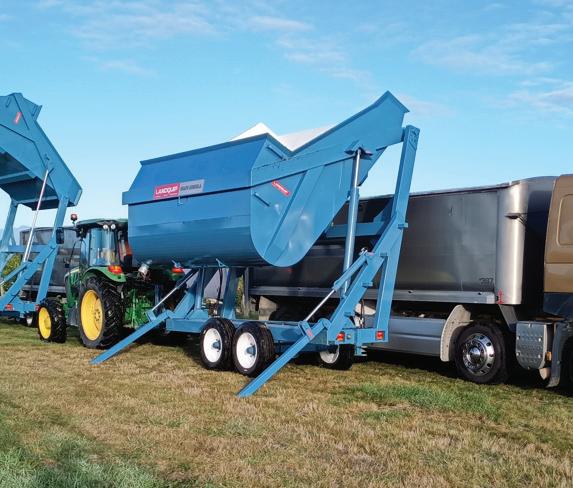
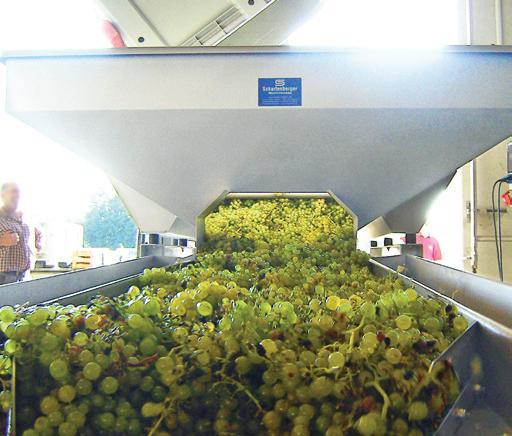

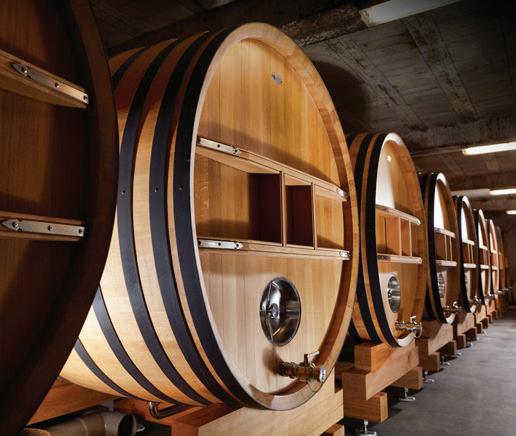

Rob Agnew knows a lot about Marlborough’s weather and its role in winegrowing, with some 36 years of his own weather statistics to call upon. As he hangs up his phenology hat, we look back at some of Rob’s groundbreaking work.
ROB AGNEW has been connected to the land and weather since beginning work with a degree in agricultural science from Lincoln University. His future seemed obvious: dairy science and farm management, probably becoming a farm advisor. Dargaville was offered.
“I love taking information from my research colleagues and communicating it to the industry so that they can use it. That’s what really spins my wheels.”
Without offending those who hold Dargaville dear, he and new wife Lynne decided it was not for them, and headed overseas for three years. Once back home in Blenheim, he joined the Ministry of Agriculture and Fisheries Research Division, based at the Marlborough Research Centre (MRC), on a temporary three-month contract that went on being renewed for three years. “My boss was eventually told to get rid of me. He didn’t, I stayed, and the rest is history.”
Rob says he’s not a traditional academic scientist. “I’m not a big picture person, and I’ve been blessed with being able to get my teeth into three or four big projects over my career. That’s my nature. And I stick at things. I love taking information from my research colleagues and communicating it to the industry so that they can use it. That’s what really spins my wheels.”
Rob admits he has to see an applied use for research, and a job at Plant & Food Research would provide just that, along with groundbreaking use of data that would change the way growers managed their vines. In the mid-1990s, Dr Rengasamy Balasubramaniam (Bala) was looking at spray regimes. “Marlborough growers were using calendar-based spray programmes taken from Gisborne and Hawke’s Bay, where heavier spraying was needed. We had one grower using 25 sprays in one season, and we enabled the number of sprays to be cut in half. This work also told us when growers should spray. And that was the start of VineFacts.”
VineFacts began as a subscription service for Marlborough growers in January 1997. Every week, Rob processed the data from weather stations and monitored vineyards around Marlborough, then wrote it up in terms everyone could understand. Now growers had relevant local

Rob Agnew
information to hand, from how many days of rain through to comparisons with previous months, disease management, and likely harvest dates.
In 2014, the MRC gifted VineFacts to New Zealand Winegrowers, and coverage expanded to Gisborne, Hawke’s Bay, North Canterbury and Central Otago, with the help of the Sustainable Farming Fund. Nelson was added to the mix in 2019-20, and in the past 10 years, monitoring and VineFacts have grown to include the weather in Martinborough.
Monitoring, evaluating and reporting – this is the science of phenology, which Oxford Languages defines as “the study of cyclical and seasonal natural phenomena, especially in relation to climate and plant and animal life”. When combined with long-term data, growers have a powerful tool to help maximise their harvests. France, for example, has more than 100 years of phenology to call upon.
Rob was involved in a mid-2000s Sauvignon Blanc research project involving Plant & Food Research, the University of Auckland and Lincoln University. “We wanted to get to the bottom of the different flavour profiles of Marlborough Sauvignon Blancs. However, as part of this programme we began monitoring vine phenology on five sub-regional Sauvignon Blanc vineyards. The phenological monitoring gave us another string to the VineFacts bow, which has continued for 20 years so far.”
“Phenology records are incredibly valuable. We can compare seasons across factors from early or late budburst, flowering, véraison and harvest, to temperature, rainfall and yield components. And we can look at how the climate is changing. For example, the last five years have been quite warm and early, and we’re already seeing a trend to early flowering and maturity. This gives growers an idea of what might be coming down the track,” Rob says. His contribution to the industry was recognised with the 2022 Marlborough MRC Award, where Dr Mike Trought called
Rob “the ‘go to’ person if you want to know about the weather in Marlborough and how it is likely to be affecting our agricultural and horticultural crops”.
Now it’s time for Rob to hand over the reins to Victoria Raw, who describes herself as a “bit of a weather junkie”. She joined what was HortResearch as a Research Associate in 2006, and has worked alongside Rob ever since. Please raise your glasses. Saluté, Rob. We wish you well in your retirement.
This story was supplied by Plant & Food Research
Victoria Raw fell into the growing side of wine by accident, after a one-year Erasmus Programme in France required her to pick an elective. She had to look up what oenology meant, but once in France, Victoria discovered her passion didn’t lie just with wine but also with viticulture. “I loved tasting the wine and I spent a year working in sales back in Edinburgh and as a lab assistant in Oporto, but what really appealed was the science. I knew that to take my interest in vines and wine seriously I’d have to go back to university.”
She found the right programme in Adelaide, completing a graduate diploma in viticulture in 1999. In 2000, she arrived at Corbans Wines (which later became part of Pernod Ricard), where she started in the vineyard, and then moved into research and development work as the viticultural technician. This brought her into contact with Plant & Food Research (then HortResearch) and a new job as Research Associate in 2006.

Her interests in weather and research became much more useful when she was introduced to Rob Agnew and VineFacts. Victoria has worked alongside Rob since then, collating data and writing for the Thursday publishing deadline. Now, she will continue Rob’s work, as well as looking at where else the data could be used, and how VineFacts might leverage digital technology from apps through to dynamic presentation of their data.


KAT PICKFORD

HAILING FROM hazelnut country in northern Turkey, Selin Civanbay is still pinching herself after arriving in Marlborough for Clos Henri’s 2024 vintage.
“What an opportunity – to travel to such a beautiful place and, of course, discover one of the famous new world wine regions.”
Selin Civanbay
The 30-year-old food engineering graduate never dreamed she would wind up following a career in wine. But after an internship at Kavaklidere Winery in Cappadocia, central Turkey, she “fell in love” with wine and set about furthering her studies and work experience in the industry.
“Turkey is a big food producer, including milk, oil, and fruits and vegetables, so the opportunities as a food engineer are huge,” Selin says. “But I felt a bit lost and didn’t know which path to follow.” Having grown up on a hazelnut farm on the outskirts of the small city of Ünye, in Karadeniz Bölgesi/the Black Sea region, Selin felt compelled to do an internship in that industry. But after completing a short stint in a hazelnut factory laboratory, she knew it was not for her and cast around for other sectors that could be of interest. “Even though I didn’t grow up with wine I felt drawn to it,” she says. “The internship was only a small taste – a very short experience – but it touched me and I knew immediately it was what I wanted to do.”
While Turkey is one of the largest producers of grapes in the world, they are largely sold as table grapes, raisins or other products, with very little dedicated towards winemaking. However, with hundreds of indigenous grape varieties, including Öküzgözü, Boğazkere, Kalecik Karasi and Narince, which produce outstanding wines that are little known around the world, the potential for Turkish wine could be huge, Selin says.
While she may return to Turkey one day to see that happen, once deciding to make wine a career, Selin decided the best place to study and work was the birthplace of the world’s most popular grapes – France. She made her way to Bordeaux to first learn French and then apply for a two-year master’s programme in wine and vineyard science at the Institut des Sciences de la Vigne et du Vin.
While studying she worked at a number of wineries in Bordeaux, Languedoc and Sancerre and found she was most interested in wine production. “I worked in a range of areas from lab analysis to production, and discovered I enjoyed the hands-on work in the winery, seeing the evolution of grapes to wine and learning all about the winemaking process.”
While in Sancerre she worked for Domaine Famille Bourgeois, a 10th generation wine family. At the interview she was asked if she would be interested in travelling to Marlborough to work at its (much younger) sister winery, Clos Henri. “Of course I said yes,” she says. “What an opportunity – to travel to such a beautiful place and, of course, discover one of the famous new world wine regions. But there is almost nowhere further from Turkey than New Zealand, so I didn’t believe it would really happen.”
Since arriving in Marlborough, she has enjoyed experiencing the difference between the new and old worlds of wine and their contrasting expressions of Sauvignon Blanc and Pinot Noir. “While you are comparing basically the same varieties, you can really see and taste the different expressions of terroir… it really is something amazing.”

Let us take care of all your controlled Temperature storage requirements:
◆ Custom controlled area
◆ Approved Transitional Facility for unloading of Imported Containers
◆ Over 60,000 cubic metres of storage spread over two sites.
◆ Chilled storage available during vintage for handpicked grapes.
◆ Sophisticated monitoring equipment ensures your product is kept at the optimum temperature.
◆ We could lease you a small room for your exclusive use to suit your particular temperature requirements (0 o C to + 30 o C).
◆ We store bottled wine, barrels of wine and new plants awaiting the opportune time to plant.
◆ Individual rooms available to grow new budwood.
“the coolest place in Marlborough”
Old Renwick Road, Blenheim Tel: 03 578 2648 Fax: 03 578 2546
www.provincialcoldstores.co.nz
Gouland Road, Spring Creek. Tel: 03 570 5944 Fax: 03 570 5955
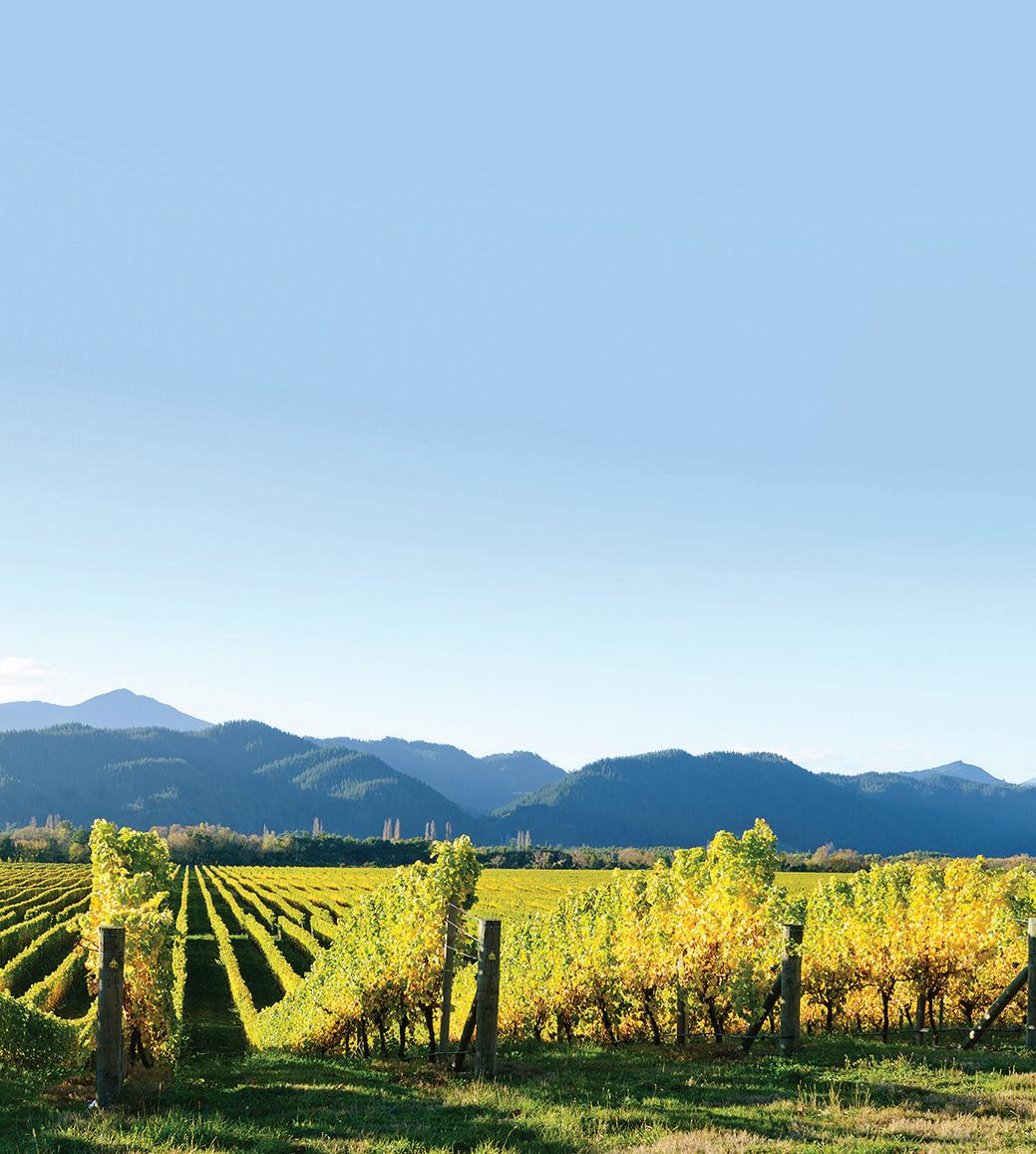

“Over 15 years experience serving the Marlborough wine industry ” PHOENIX
Warm and Chilled Glycol Systems Design & Build Mechanical Services
Heat Recovery Systems
S/S Wine and Juice Lines
Water Treatment and Filtration
WWW.PHOENIXMECHANICAL.CO.NZ 021
SUPPLIERS OF:
n Vineyard posts & strainers
n Quality timber products
n Utility buildings - designed for your needs
n Locally owned
n Working towards the betterment of Marlborough
TOP DEALS / TOP SERVICE
163 Hammerichs Road, Blenheim
Ph 03 578 0221 Fax 03 578 0251
sales@rapauratimber.co.nz
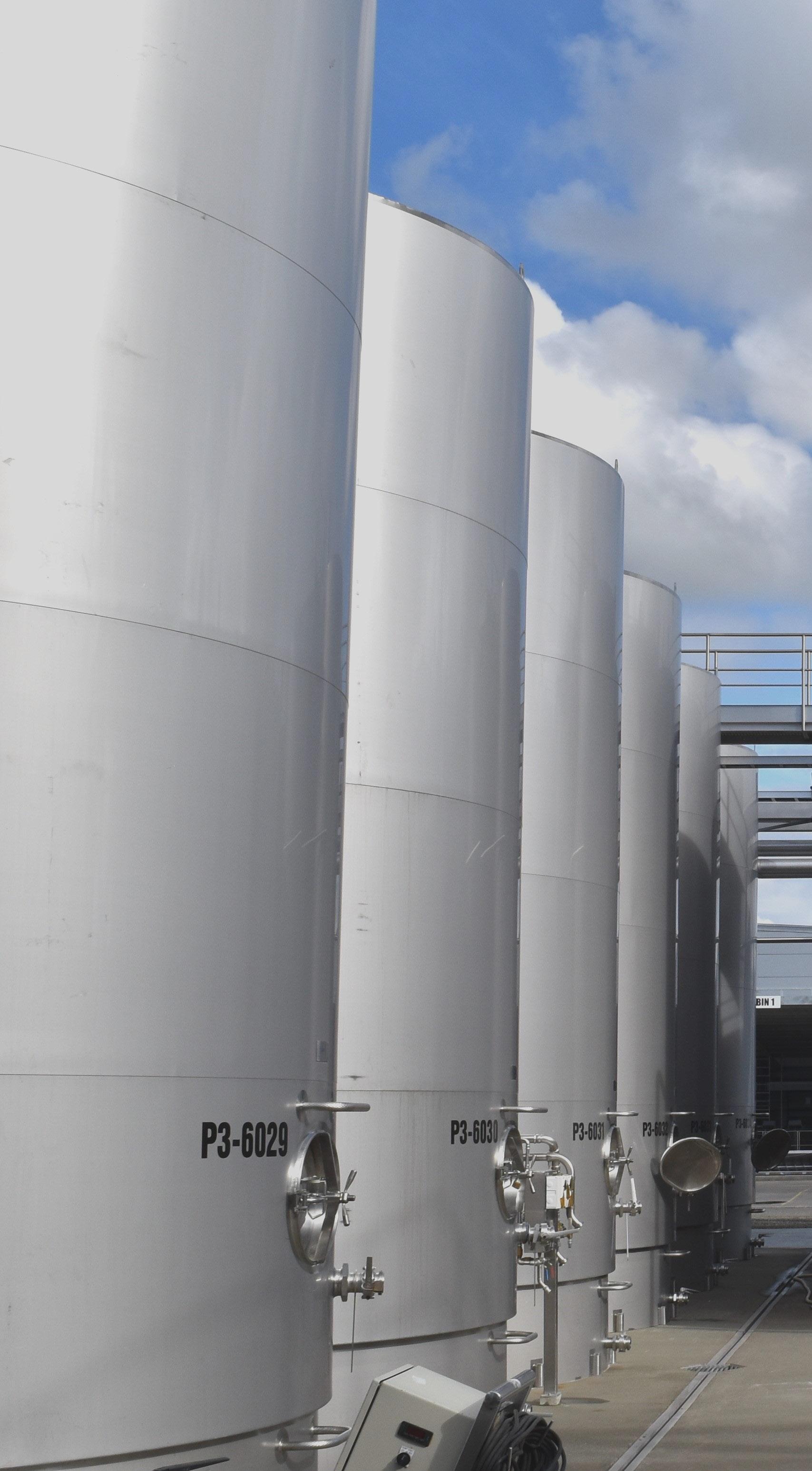

AS THE New Zealand wine industry has evolved, it has been fortunate to face minimal impact from pests and diseases, largely due to the country’s geographical isolation. However, biosecurity risk is rising with increasing global connectivity, which is evident from recent notable incursions. Biosecurity needs to be a priority for all stakeholders in the wine industry.
The pursuit of sustainability within the wine industry, and ensuring the long-term viability of the sector, requires robust biosecurity measures. Proactive engagement, vigilant surveillance, and advocacy form the cornerstone of effective biosecurity management. We must watch for and anticipate potential threats and plan effectively to respond to incursions when they occur. New Zealand Winegrowers (NZW) developed a list of New Zealand’s most unwanted vineyard pests and diseases as part of this proactive approach. In this month’s Biosecurity Watch, we highlight some of the exotic pests and diseases that could impact New Zealand’s wine industry.
The wine industry’s two highest-priority exotic pests and diseases are the brown marmorated stink bug and Pierce’s disease (Xylella Fastidiosa). All growers should be aware of the potential consequences if either of these were to become established, but this article is focused on some others that have made the top 10 most unwanted list.
Vine mealy bug. Credit René FH Sforza
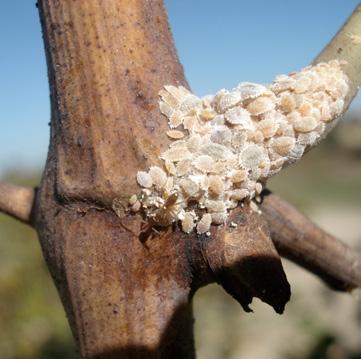
USDA ARS
EBCL
While New Zealand contends with various mealybugs that pose economic challenges to winegrowers, the vine mealybug has yet to establish itself in the country. However, should it gain a foothold, the vine mealybug presents a significant threat due to its preference for grapevines and rapid reproduction rates. Not only does
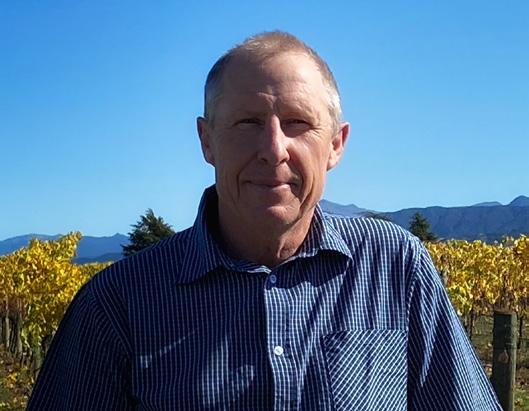
it have the potential to transmit grape leafroll-associated viruses, but it can cause a decline in production from infected vines.
The excretion of honeydew by the vine mealybug fosters the growth of black sooty mould on vines, thereby damaging both fruit and foliage. This is one of the most significant vineyard pests in California. Despite its broad host range, grapevines are its preferred food source, with the bugs feeding primarily on phloem sap but found throughout the plant, even down to the roots. With a rapid reproductive cycle, females can lay up to 700 eggs in a season, leading to potentially severe infestations, especially at harvest when populations peak, heightening the risk of spread. The potential introduction of the vine mealybug to New Zealand would most likely occur through infected plant material or imported vineyard machinery. While chemical and biological solutions exist for managing this pest, good biosecurity practices remain paramount in preventing an incursion.

Credit Pennsylvania Department of Agriculture,
The spotted lanternfly is emerging as a significant threat to vineyards abroad, particularly in the eastern United States. Since its initial detection in Berks County, Pennsylvania, within the last decade, this invasive pest has rapidly spread to neighbouring states such as New Jersey, Maryland, and Delaware. Originating from Southeast Asia, the spotted lanternfly has yet to be found in New Zealand. Its potential entry into the country is most likely through egg masses hitchhiking on shipping containers or imported goods.
Spotted lanternflies feed primarily on phloem and target vine trunks, shoots, and leaves, impairing photosynthesis
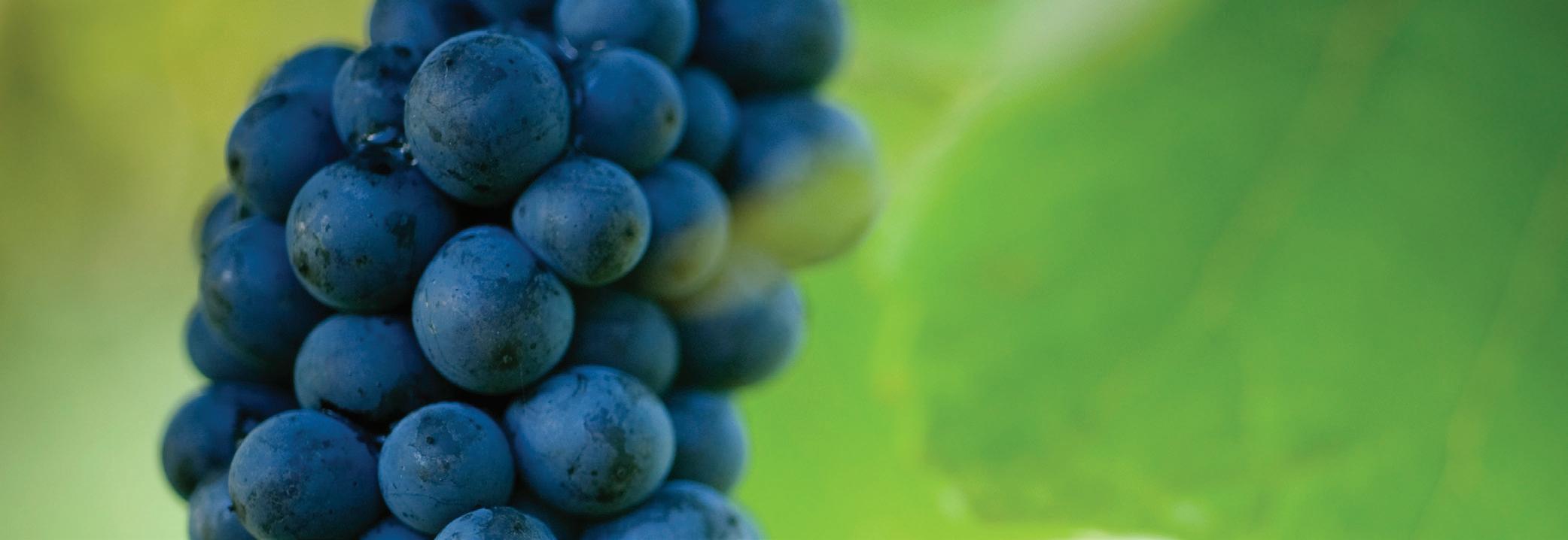


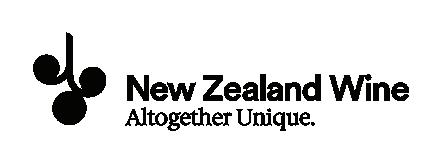
and weakening the vines. Their voracious appetite results in the excretion of significant amounts of honeydew, attracting wasps and fostering outbreaks of black sooty mould. Both nymphs and adults pose a threat to grapevines, congregating in large numbers on host plants.
Despite their name, spotted lanternflies are not true flies but rather planthoppers, exhibiting a preference for jumping rather than flying due to their clumsy aerial abilities. Resembling moths, they measure approximately 18mm in length and sport two sets of wings. Their forewings feature light brown hues with black spots, while the hindwings display scarlet tones with black spots at the front and black bars at the rear. Nymphs undergo colour changes throughout their development stages, transitioning from black with white spots to red with dark stripes. Egg masses resemble smudges of mud and exhibit a waxy brown colouration.
Highly mobile in nature, if established in New Zealand, spotted lanternflies would pose formidable challenges to vineyard management. Reports from the US suggest these pests tend to aggregate around the perimeters of vineyards in significant numbers. While they display sensitivity to many contact insecticides, these treatments do not prevent reinfestation, exacerbating the control challenges due to their sheer abundance.
Black rot of grape, caused by the fungus Phyllosticta ampelicida (also known as Guignardia bidwellii), originates from North America but has spread to Europe, Asia, Africa, and South America, yet remains absent in New Zealand. Also detected in South Korea, black rot poses a significant threat to grape crops, particularly in humid regions. All common cultivars of Vitis vinifera are highly susceptible to this fungus, which thrives in hot and humid conditions, making the North Island of New Zealand a likely climatically suitable area.
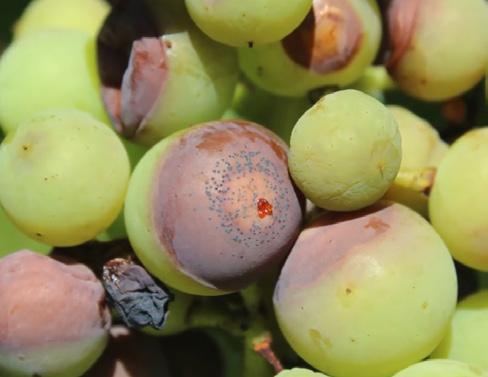
It's the technology, engineering and grower-centric support that makes FrostBoss®
Entry into New Zealand could occur through infected plant material or soil, as well as nursery stock and fresh produce. Symptoms manifest on leaves, stems, and fruit during spring, summer, and autumn, with infected berries turning dark brown and shriveling into hard, raisin-like bodies covered in easily spread spores. Circular leaf lesions, appearing as small black spots, also indicate infection. Black rot survives the winter in canes, leaves, and mummied berries within the vine and on the ground, with rain triggering spore release and infection of susceptible tissue.
Overseas, managing black rot involves vineyard hygiene practices, chemical control via fungicide sprays, and prompt removal of infected plant parts. Maximizing vine aeration and rapid drying after rainfall are preventative measures. Vigilance through regular vine inspections is crucial for early detection and disease management.

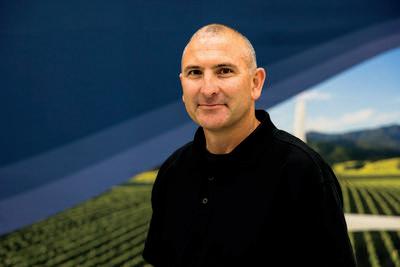
A new collaboration between Isabel Estate Winery and Renwick School is “sowing the seeds of a sustainable future”, starting with a native nursery at the school. “This innovative partnership entails the propagation and planting of native trees by students, fostering a multigenerational connection to conservation efforts,” says Nick Best, who is winery, operations and bottling manager at Isabel Estate, and also parent to a couple of children at Renwick School. The winery donated a greenhouse to the school, then installed it, with Isabel staff members also putting in planting tables, benches and paving around the native nursery. Isabel plants around 400 trees on its vineyard and winery grounds every year, and wanted to extend the impact of its conservation program while engaging with a younger generation, Nick says. “The initiative is designed to involve students of all ages. Younger students will learn the art of propagating seedlings, nurturing them into healthy plants. These plants will then find homes both at Isabel Estate Winery and within the local community, as older students take charge of planting them in various locations around Renwick.”

International harvest staff will assist in harvesting seeds for the students each year. “This global participation adds a rich layer of diversity to the project, emphasising its broad-reaching significance.” By instilling a sense of stewardship for the environment across different generations, the initiative enhances biodiversity while fostering a deeper connection between the winery, the school, and the wider community, Nick says. “Through this collaboration, Isabel Estate Winery and Renwick School are sowing the seeds of a sustainable future, where conservation efforts are intertwined with education, community involvement, and intergenerational dialogue.”
The annual Harvest Concert kicked off vintage 2024 in style, with 450 people – including a mix of local and international winery interns –gathering at Framingham’s cellar door. The evening’s entertainment started with local winery band Sink My Uglies, joined by an array of local guest musicians. “I think there were nine people on stage at one time,” says Framingham managing director Tom Trolove. They were followed by local talent Team Scary and Christchurch outfit Salad Boys, before the night wound up with Wellington’s The Nudge, who “had everyone dancing right to the end”. All the bands dedicated songs to the late Bridget Glackin, who drove the continued success of the Harvest Concert with her trademark humour, enthusiasm and support for musicians, Tom adds. “It was a very special night.”
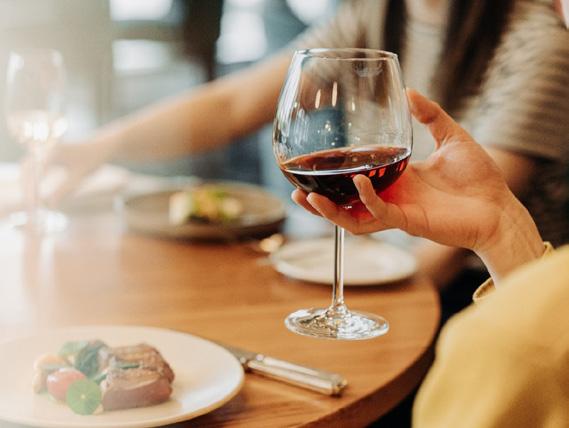

New Zealand Parliament’s catering service is planning a signature line of New Zealand wine to be served at parliamentary events, as the house wine in Bellamys restaurant and Pickwicks bar, and to be available in the Parliament gift shop. “Diners and visitors to Parliament already enjoy food which showcases the best of New Zealand cuisine, while soaking up the atmosphere at the heart of New Zealand’s democracy. Now, we want to pair this quintessentially New Zealand experience with some of our country’s finest wines”, says Parliamentary Service chief executive Rafael Gonzalez-Montero. “We want to showcase our homegrown produce to the over 80,000 people who visit Parliament every year.” All wineries in New Zealand can submit their varietals to be part of the exclusive Parliament wine range, which will feature a variety of white and red wines, a port, and a méthode traditionnelle. “One of the reasons our wine industry is so unique is the range of styles we’re able to produce from subtropical Northland to icy Otago, and we’d like our wine list to reflect how diverse our winemaking regions are,” Rafael says. From the applications, a shortlist of wineries will be invited to present their wines to an expert panel in Wellington, who will evaluate each on a range of criteria, including sustainability, technical merit, and value for money. Go to parliament.nz.
Appellation Marlborough Wine has appointed Michael Wentworth as chief executive officer, in a role beginning the middle of April. Appellation Marlborough Wine (AMW) is “the future of Marlborough’s wine industry”, says the group’s chair John Buchanan. “Our members are leading wine growers with a long-term commitment to protecting and enhancing our region.” Michael has spent more than
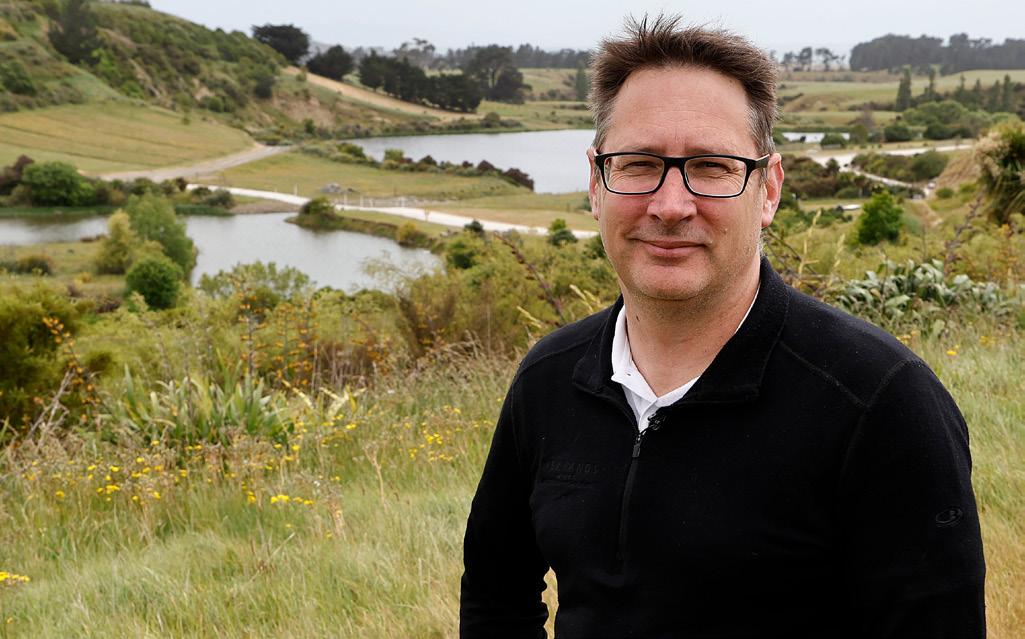
20 years working directly with New Zealand wineries, including in sales, marketing, operations and sustainability roles. He says AMW has achieved “phenomenal” things in the past few years. “Their single-minded focus on protecting and enhancing Marlborough’s wine quality is to be admired. I am really looking forward to working alongside many of the region’s flagship wine producers and elevating their collective efforts globally.” John says the organisation’s growth has been “rather organic” to date. “We’ve made significant in-roads with wine buyers and enthusiasts over the past few years and it is critical that we capitalise on this momentum.”
Marlborough Research Centre turns 40
Next month marks 40 years since the Marlborough Research Centre (MRC) was established on a site between Blenheim and Grove Town, with Dr Mike Trought as Officer in Charge. A 1983 discussion document between researchers at DSIR Riwaka and MAF Lincoln noted that the region had an “urgent” need to improve pastures using new species. Suitable crops for the region included asparagus, strawberries, stone fruit, pip fruit, clovers and lucerne, as

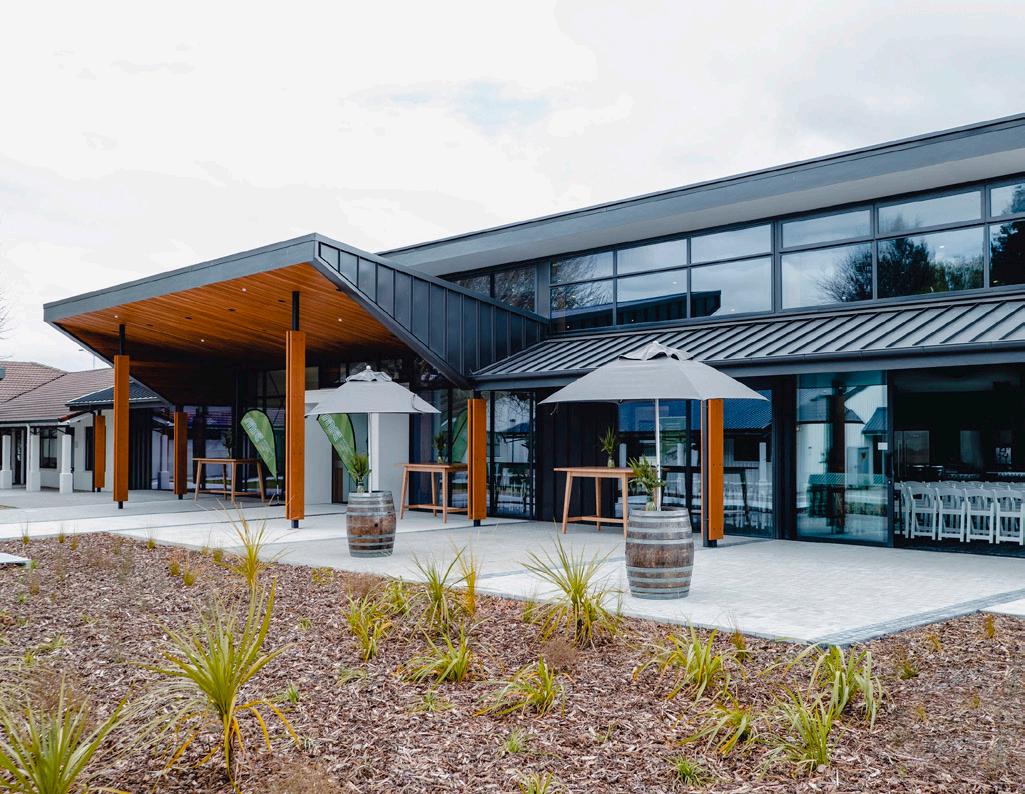
well as medicinal crops, they said. According to the MRC’s 2008/2009 Annual Report, which marked 25 years of the research hub, the need for more viticultural research was acknowledged, with forecasts the region would become one of the major grape growing areas of New Zealand. But the size of the industry was dependent on the effects of export market opportunities, the document said. “We feel that it would be unwise in these initial discussions and calculations to allow grape production to assume an over dominant role.”
Four decades on, the MRC’s main campus on Budge Street has been rebranded as the New Zealand Wine Centre - Te Pokapū Wāina o Aotearoa, which was opened in 2022. It also retains the Grovetown Park campus, has a 10-hectare research vineyard, and is a hub of grape and wine research and education, with Plant & Food Research’s Viticulture and Oenology group, New Zealand Winegrowers, and Bragato Research Institute all onsite. The New Zealand Wine Centre is now nearing completion of the Experimental Future Vineyard, which will be operated by Plant & Food. Gerald Hope, who joined MRC as chief executive in 1991 and is about to step back from the role, says the hub will continue to promote collaboration and seek out better primary production opportunities in Marlborough and beyond. “The development and future focus for MRC investment is now well set up for the next phase led by industry-initiated research”.

A monthly list of events within the New Zealand wine industry.
To have your event included in the April 2024 Wine Happenings, please email details to sophie@sophiepreece.co.nz by April 20. For more information, please go to the website supplied or email sarah@winemarlborough.nz
APRIL
6 Forrest Summer Sunday Sessions every Sunday until the end of April 2024 (marlboroughnz.com/events)
MAY
3 International Sauvignon Blanc Day
9 V.I.N.E – (Vit Info Networking Evening) for the Marlborough Young Viticulturist of the Year Competition 2024 (marlboroughwinenz.com/industry-events/vine)
11 Saint Clair Vineyard Half Marathon (vineyardhalf.com)
20-26 Tech Week ( techweek.co.nz/about/regions/marlborough)
27-31 Marlborough Wine Industry Wellness Week
31 Enchanted Evenings at FROMM winery. Every Friday & Saturday evening, 5 pm - 7 pm
JUNE
12 Horticentre Charitable Trust OWNZ Kelly Mulville Tour (marlboroughwinenz.com/industy-events)
24 Grape Days Marlborough (nzwine.com/en/initiativesevents/research/grape-days)
25-27 WinePro; Vine to Wine, Marlborough Lines Stadium 2000 (winepro.co.nz)
JULY
4 Marlborough Young Viticulturist of the Year competition 2024 (nzwine.com/en/events)
31 Marlborough Young Winemaker of the Year competition 2024 (nzwine.com/en/events)
AUGUST
29-30 New Zealand Wine, Altogether Unique 2024 (nzwine.com/en/initiativesevents/altogether-unique-2024)


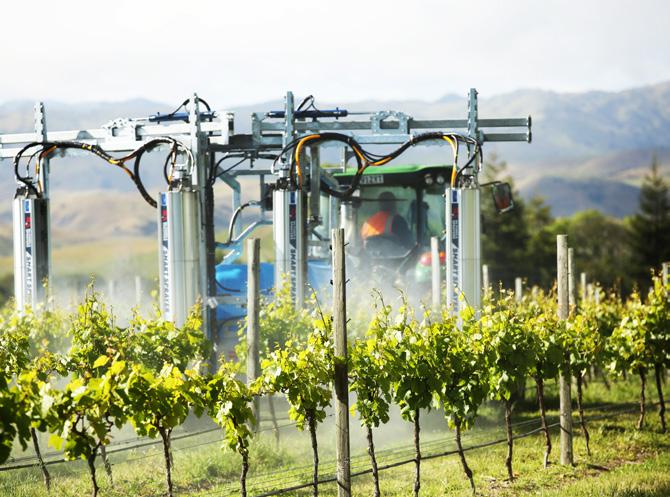










Fruitfed Supplies works closely with growers, suppliers and industry bodies to support the success and sustainability of the viticulture sector.
Stay in the loop with the latest crop management practices, including product updates and tech tips.
SIGN UP NOW | Scan the QR code to receive our monthly email updates

We know horticulture

